Recension: le livre de cécile Vanderpelen-Diagre sur la littérature catholique belge dans l’entre-deux-guerres
Script du présentation de l’ouvrage dans les Cercles de Bruxelles, Liège, Louvain, Metz, Lille et Genève
Recension : Cécile Vanderpelen-Diagre, Écrire en Belgique sous le regard de Dieu, éd. Complexe / CEGES, Bruxelles, 2004.
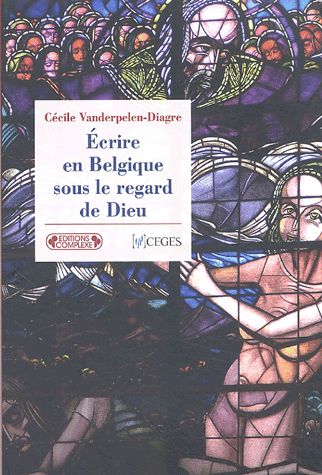 Dans son ouvrage majeur, qui dévoile à la communauté scientifique les thèmes principaux de la littérature catholique belge de l’entre-deux-guerres, Cécile Vanderpelen-Diagre aborde un continent jusqu’ici ignoré des historiens, plutôt refoulé depuis l’immédiat après-guerre, quand le monde catholique n’aimait plus se souvenir de son exigence d’éthique, dans le sillage du Cardinal Mercier ni surtout de ses liens, forts ou ténus, avec le rexisme qui avait choisi le camp des vaincus pendant la Seconde Guerre mondiale.
Dans son ouvrage majeur, qui dévoile à la communauté scientifique les thèmes principaux de la littérature catholique belge de l’entre-deux-guerres, Cécile Vanderpelen-Diagre aborde un continent jusqu’ici ignoré des historiens, plutôt refoulé depuis l’immédiat après-guerre, quand le monde catholique n’aimait plus se souvenir de son exigence d’éthique, dans le sillage du Cardinal Mercier ni surtout de ses liens, forts ou ténus, avec le rexisme qui avait choisi le camp des vaincus pendant la Seconde Guerre mondiale.
Pendant plusieurs décennies, la Belgique a vécu dans l’ignorance de ses propres productions littéraires et idéologiques, n’en a plus réactivé le contenu sous des formes actualisées et a, dès lors, sombré dans l’anomie totale et dans la déchéance politique : celle que nous vivons aujourd’hui. Plus aucune éthique ne structure l’action dans la Cité.
Le travail de C. Vanderpelen-Diagre pourrait s’envisager comme l’amorce d’une renaissance, comme une tentative de faire le tri, de rappeler des traditions culturelles oubliées ou refoulées, mais il nous semble qu’aucun optimisme ne soit de mise : le ressort est cassé, le peuple est avachi dans toutes ses composantes (à commencer par la tête...). Son travail risque bien de s’apparenter à celui de Schliemann : n’être qu’une belle œuvre d’archéologue. L’avenir nous dira si son livre réactivera la “virtù” politique, au sens que lui donnaient les Romains de l’antiquité ou celui qui entendait la réactiver, Nicolas Machiavel.
“Une littérature qui a déserté la mémoire collective”
Dès les premiers paragraphes de son livre, C. Vanderpelen-Diagre soulève le problème majeur : si la littérature catholique, qui exigeait un sens élevé de l’éthique entre 1890 et 1945, a cessé de mobiliser les volontés, c’est que ses thèmes “ont déserté la mémoire collective”. Le monde catholique belge (et surtout francophone) d’aujourd’hui s’est réduit comme une peau de chagrin et ce qu’il en reste se vautre dans la fange innommable d’un avatar lointain et dévoyé du maritainisme, d’un festivisme abject et d’un soixante-huitardisme d’une veulerie époustouflante. Aucun citoyen honnête, possédant un “trognon” éthique solide, ne peut se reconnaître dans ce pandémonium. Nous n’échappons pas à la règle : né au sein du pilier catholique parce que nos racines paysannes ne sont pas très loin et plongent, d’une part, dans le sol hesbignon-limbourgeois, et, d’autre part, dans ce bourg d’Aalter à cheval sur la Flandre occidentale et orientale et dans la région d’Ypres, comme d’autres naissent en Belgique dans le pilier socialiste, nous n’avons pas pu adhérer (un vrai “non possumus”), à l’adolescence, aux formes résiduaires et dévoyées du catholicisme des années 70 : c’est sans nul doute pourquoi, en quelque sorte orphelins, nous avons préféré le filon, alors en gestation, de la “nouvelle droite”.
L’époque de gloire du catholicisme belge (francophone) est oubliée, totalement oubliée, au profit du bric-à-brac gauchiste et pseudo-contestataire ou de parisianismes de diverses moutures (dont la “nouvelle droite” procédait, elle aussi, de son côté, nous devons bien en convenir, surtout quand elle a fini par se réduire à son seul gourou parisien et depuis que ses antennes intéressantes en dehors de la capitale française ont été normalisées, ignorées, marginalisées ou exclues). Cet oubli frappe essentiellement une “éthique” solide, reposant certes sur le thomisme, mais un thomisme ouvert à des innovations comme la doctrine de l’action de Maurice Blondel, le personnalisme dans ses aspects les plus positifs (avant les aggiornamenti de Maritain et Mounier), l’idéal de communauté. Cette “éthique” n’a plus pu ressusciter, malgré les efforts d’un Marcel De Corte, dans l’ambiance matérialiste, moderniste et américanisée des années 50, sous les assauts délétères du soixante-huitardisme des années 60 et 70 et, a fortiori, sous les coups du relativisme postmoderne et du néolibéralisme.
L’exigence éthique, pierre angulaire du pilier catholique de 1884 à 1945, n’a donc connu aucune résurgence. On ne la trouvait plus qu’en filigrane dans l’œuvre de Hergé, dans ses graphic novels, dans ses “romans graphiques” comme disent aujourd’hui les Anglais. Ce qui explique sans doute la rage des dévoyés sans éthique — viscéralement hostiles à toute forme d’exigence éthique — pour extirper les idéaux discrètement véhiculés par Tintin.
Les imitations serviles de modèles parisiens (ou anglo-saxons) ne sont finalement d’aucune utilité pour remodeler notre société malade. C. Vanderpelen-Diagre, qui fait œuvre d’historienne et non pas de guide spirituelle, a amorcé un véritable travail de bénédictin. Que nous allons immanquablement devoir poursuivre dans notre créneau, non pour jouer aux historiens mais pour appeler à la restauration d’une éthique, fût-elle inspirée d’autres sources (Mircea Eliade, Seyyed Hossein Nasr, Walter Otto, Karl Kerenyi, etc.). Il s’agit désormais d’analyser le contenu intellectuel des revues parues en nos provinces entre 1884 et 1945 au sein de toutes les familles politiques, de décortiquer la complexité idéologique qu’elles recèlent, de trouver en elles les joyaux, aussi modestes fussent-ils, qui relèvent de l’immortalité, de l’impassable, avec lesquels une “reconstruction” lente et tâtonnante sera possible au beau milieu des ruines (dirait Evola), en plein désert axiologique, où qui conforteront l’homme différencié (Evola) ou l’anarque (Jünger) pour (sur)vivre au milieu de l’horreur, dans le Château de Kafka, ou dans labyrinthe de son Procès.
Les travaux de Zeev Sternhell sur la France, surtout son Ni gauche, ni droite, nous induisaient à ne pas juger la complexité idéologique de cette période selon un schéma gauche/droite trop rigide et par là même inopérant. Dans le cadre de la Belgique, et à la suite de C. Vanderpelen-Diagre et de son homologue flamande Eva Schandervyl (cf. infra), c’est un mode de travail à appliquer : il donnera de bons résultats et contribuera à remettre en lumière ce qui, dans ce pays, a été refoulé pendant de trop nombreuses décennies.
La “Jeune Droite” d’Henry Carton de Wiart
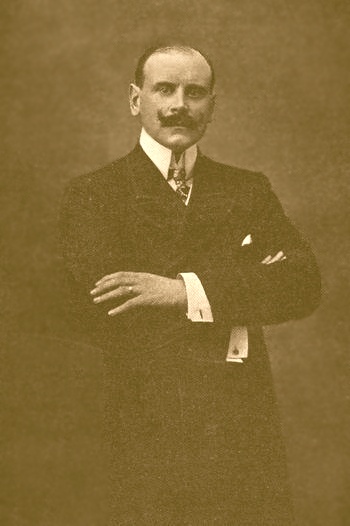 Pour C. Vanderpelen-Diagre, les origines de la “révolution conservatrice” belge-francophone, essentiellement catholique, plus catholique que ses homologues dans la France républicaine, plus catholique que l’Action Française trop classiciste et pas assez baroque, se trouvent dans la Jeune Droite d’Henry Carton de Wiart (1869-1951), assisté de Paul Renkin et de l’historien arlonnais germanophile Godefroid Kurth, animateur du Deutscher Verein avant 1914 (le déclenchement de la Première Guerre mondiale et le viol de la neutralité belge l’ont forcé, dira-t-il, de « brûler ce qu’il a adoré » ; pour un historien qui s’est penché sur la figure de Clovis, cette parole a du poids...). La date de fondation de la Jeune Droite est 1891, 2 ans avant l’encyclique Rerum Novarum. La Jeune Droite n’est nullement un mouvement réactionnaire sur le plan social : il fait partie intégrante de la Ligue démocratique chrétienne. Il publie 2 revues : L’Avenir social et La Justice sociale. Les 2 publications s’opposent à la politique libéraliste extrême, prélude au néo-libéralisme actuel, préconisée par le ministre catholique Charles Woeste. Elles soutiennent aussi les revendications de l’Abbé Adolf Daens, héros d’un film belge homonyme qui a obtenu de nombreux prix et où l’Abbé, défenseur des pauvres, est incarné par le célèbre acteur flamand Jan Decleir.
Pour C. Vanderpelen-Diagre, les origines de la “révolution conservatrice” belge-francophone, essentiellement catholique, plus catholique que ses homologues dans la France républicaine, plus catholique que l’Action Française trop classiciste et pas assez baroque, se trouvent dans la Jeune Droite d’Henry Carton de Wiart (1869-1951), assisté de Paul Renkin et de l’historien arlonnais germanophile Godefroid Kurth, animateur du Deutscher Verein avant 1914 (le déclenchement de la Première Guerre mondiale et le viol de la neutralité belge l’ont forcé, dira-t-il, de « brûler ce qu’il a adoré » ; pour un historien qui s’est penché sur la figure de Clovis, cette parole a du poids...). La date de fondation de la Jeune Droite est 1891, 2 ans avant l’encyclique Rerum Novarum. La Jeune Droite n’est nullement un mouvement réactionnaire sur le plan social : il fait partie intégrante de la Ligue démocratique chrétienne. Il publie 2 revues : L’Avenir social et La Justice sociale. Les 2 publications s’opposent à la politique libéraliste extrême, prélude au néo-libéralisme actuel, préconisée par le ministre catholique Charles Woeste. Elles soutiennent aussi les revendications de l’Abbé Adolf Daens, héros d’un film belge homonyme qui a obtenu de nombreux prix et où l’Abbé, défenseur des pauvres, est incarné par le célèbre acteur flamand Jan Decleir.
Henry Carton de Wiart, alors jeune avocat, réclame une amélioration des conditions de travail, le repos dominical pour les ouvriers, s’insurge contre le travail des enfants, entend imposer une législation contre les accidents de travail. Il préconise également d’imiter les programmes sociaux post-bismarckiens, en versant des allocations familiales et défend l’existence des unions professionnelles. Très social, son programme n’est pourtant pas assimilable à celui des socialistes qui lui sont contemporains : Carton de Wiart ne réclame pas le suffrage universel pur et simple, et lui substitue la notion d’un suffrage proportionnel à partir de 25 ans, dans un système de représentation également proportionnelle.
En parallèle, Henry Carton de Wiart s’associe à d’autres figures oubliées de notre patrimoine littéraire et idéologique, Firmin Van den Bosch (1864-1949) et Maurice Dullaert (1865-1940). Le trio s’intéresse aux avant-gardes et réclame l’avènement, en Belgique, d’une littérature ouverte à la modernité. Deux autres revues serviront pour promouvoir cette politique littéraire : d’abord, en 1884, la jeune équipe tente de coloniser Le Magasin littéraire et artistique, ensuite, en 1894, 3 ans après la fondation de la Jeune Droite et un an après la proclamation de l’encyclique Rerum Novarum, nos 3 hommes fondent la revue Durandal qui paraîtra pendant 20 ans (jusqu’en 1914). Comme nous le verrons, le nom même de la revue fera date dans l’histoire du “mouvement éthique” (appellons-le ainsi...). Parmi les animateurs de cette nouvelle publication, citons, outre Henry Carton de Wiart lui-même, Pol Demade, médecin spécialisé en médecine sociale, et l’Abbé Henri Moeller (1852-1918). Ils seront vite rejoints par une solide équipe de talents : Firmin Van den Bosch, Pierre Nothomb (stagiaire auprès du cabinet d’avocat de Carton de Wiart), Victor Kinon (1873-1953), Maurice Dullaert, Georges Virrès (1869-1946), Arnold Goffin (1863-1934), Franz Ansel (1874-1937), Thomas Braun (1876-1961) et Adolphe Hardy (1868-1954).
Spiritualité et justice sociale
Leur but est de créer un “art pour Dieu” et leurs sources d’inspiration sont les auteurs et les artistes s’inspirant du “symbolisme wagnérien”, à l’instar des Français Léon Bloy, Villiers de l’Isle-Adam, Francis Jammes et Joris Karl Huysmans. Pour cette équipe, comme aussi pour Bloy, les catholiques sont une “minorité souffrante”, surtout en France à l’époque où sont édictées et appliquées les lois du “petit Père Combes”. Autres références françaises : les œuvres d’Ernest Psichari et de Paul Claudel. Le wagnérisme et le catholicisme doivent, en fusionnant dans les œuvres, générer une spiritualité offensive qui s’opposera au “matérialisme bourgeois” (dont celui de Woeste). La spiritualité et l’idée de justice sociale doivent donc marcher de concert. Le contexte belge est toutefois différent de celui de la France : les catholiques belges avaient gagné la bataille métapolitique, ils avaient engrangé une victoire électorale en 1884, à l’époque où Firmin Van den Bosch tentait de noyauter Le Magasin littéraire et artistique. Dans la guerre scolaire, les catholiques enregistrent également des victoires partielles : face aux libéraux, aux libéraux de gauche (alliés implicites des socialistes) et aux socialistes, il s’agit, pour la jeune équipe autour de Carton de Wiart et pour la rédaction de Durandal, de « gagner la bataille de la modernité ». À l’avant-garde socialiste (prestigieuse avec un architecte “Art Nouveau” comme Horta), il faut opposer une avant-garde catholique. La modernité ne doit pas être un apanage exclusif des libéraux et des socialistes. La différence entre ces catholiques qui se veulent modernistes (sûrement avec l’appui du Cardinal) et leurs homologues laïques, c’est qu’ils soutiennent la politique coloniale lancée par Léopold II en Afrique centrale. Le Congo est une terre de mission, une aire géographique où l’héroïsme pionnier ou missionnaire pourra donner le meilleur de lui-même.
Quelles valeurs va dès lors défendre Durandal ? Elle va essentiellement défendre ce que ses rédacteurs nommeront le “sentiment patrial”, présent au sein du peuple, toutes classes confondues. On retrouve cette idée dans le principal roman d’Henry Carton de Wiart, La Cité ardente, œuvre épique consacrée à la ville de Liège. La notion de “sentiment patrial”, nous la retrouvons surtout dans les textes annonciateurs de la “révolution conservatrice” dus à la plume de Hugo von Hofmannsthal, où l’écrivain allemand déplore la disparition des “liens” humains sous les assauts de la modernité et du libéralisme, qui brisent les communautés, forcent à l’exode rural, laissent l’individu totalement esseulé dans les nouveaux quartiers et faubourgs des grandes villes industrielles et engendrent des réflexes individualistes délétères dans la société, où les plaisirs hédonistes, furtifs ou constants selon la fortune matérielle, tiennent lieu d’Ersätze à la spiritualité et à la charité. Cette déchéance sociale appelle une “restauration créatrice”. Le sentiment d’Hofmannsthal sera partagé, mutatis mutandis, par des hommes comme Arthur Moeller van den Bruck et Max Hildebert Boehm.
L’idée “patriale” s’inscrit dans le projet du Chanoine Halflants, issu d’une famille tirlemontoise qui avait assuré le recrutement en Hesbaye de nombreux zouaves pontificaux, pour la guerre entre les États du Pape et l’Italie unitaire en gestation sous l’impulsion de Garibaldi. Avant 1910, le Chanoine Halflants préconisera tolérance et ouverture aux innovations littéraires. Après 1918, il prendra des positions plus “réactionnaires”, plus en phase avec la “bien-pensance” de l’époque et plus liées à l’idéal classique. Qu’est ce que cela veut dire ? Que le Chanoine entendait, dans un premier temps, faire figurer les œuvres littéraires modernes dans les anthologies scolaires, ainsi que la littérature belge (catholique qui adoptait de nouveaux canons stylistiques et des thématiques romanesques profanes). Il s’opposait dans ce combat aux Jésuites, qui n’entendaient faire étudier que des auteurs grecs et latins antiques. Halflants gagnera son combat : les Jésuites finiront par accepter l’introduction de nouveaux écrivains dans les curricula scolaires. De ces efforts naîtra une “anthologie des auteurs belges”. L’objectif, une fois de plus, est de ne pas abandonner les formes modernes d’art et de littérature aux forces libérales et socialistes qui, en épousant les formes multiples d’ “Art Nouveau” apparaissaient comme les pionniers d’une culture nouvelle et libératrice.
Bourgeoisie ethétisante et prêtres maurrassiens
Cette agitation de la Jeune Droite et de Durandal repose, mutatis mutandis, sur un clivage bien net, opposant une bourgeoisie industrielle et matérialiste à une bourgeoisie cultivée et esthétique, qui a le sens du Bien et du Beau que transmettent bien évidemment les humanités gréco-latines. La bourgeoisie matérialiste et industrielle est incarnée non seulement par les libéraux sans principes éthiques solides mais aussi par des catholiques qui se laissent séduire par cet esprit mercantile, contraire au “sentiment patrial”. Cette idée d’un clivage entre matérialistes et esthètes, on la retrouve déjà dans l’œuvre laïque et irreligieuse de Camille Lemonnier (édité en Allemagne, dans des éditions superbes, par Eugen Diederichs). La bourgeoisie affairiste provoque une décadence des mœurs que l’esthétisme de ceux de ses enfants, qui sont pieux et contestataires, doit endiguer. Pour enrayer les progrès de la décadence, il faut, selon les directives données antérieurement par Louis de Bonald en France, lutter contre le libéralisme politique.
C’est à partir du moment où certains jeunes catholiques belges, soucieux des questions sociales, entendent suivre les injonctions de Bonald, que la Jeune Droite et Durandal vont s’inspirer de Charles Maurras, en lui empruntant son vocabulaire combatif et opérant. Les catholiques belges de la Jeune Droite et les Français de l’Action française s’opposent donc de concert au libéralisme politique, en le fustigeant allègrement. Dans ce contexte émerge le phénomène des “prêtres maurrassiens”, avec, à Liège, Louis Humblet (1874-1949), à Mons, Valère Honnay (1883-1949) et, à Bruxelles, Ch. De Smet (1833-1911) et J. Deharveng (1867-1929). Ce maurrasisme est seulement stylistique dans une Belgique assez germanophile avant 1914. Les visions géopolitiques et anti-allemandes du filon maurrassien ne s’imposeront en Belgique qu’à partir de 1914. D’autres auteurs français influencent l’idéologie de Durandal, les 4 “B” : Barrès, Bourget, Bordeaux et Bazin.
C’est Bourget qui exerce l’influence la plus importante : il veut, en des termes finalement très peu révolutionnaires, une “humanité non dégradée”, reposant sur la famille, l’honneur conjugal et les fortes convictions (religieuses). Le poids de Bourget sera de longue durée : on verra que cette éthique très pieuse et très conventionnelle influencera le groupe de la “Capelle-aux-Champs” que fréquentera Hergé, le créateur de Tintin, et Franz Weyergans, le père de François Weyergans (qui répondra par un livre aux idéaux paternels, inspirés de Paul Bourget, livre qui lui a valu le “Grand Prix de la langue française” en 1997, ce qui l’amena plus tard à occuper un siège à l’Académie Française ; cf. : Franz et François, Grasset, 1997 ; pour comprendre l’apport de Bourget, tout à la fois à la modernisation du sentiment littéraire des catholiques et à la critique des œuvres contemporaines de Baudelaire, Stendhal, Taine, Renan et Flaubert, lire : Paul Bourget, Essais de psychologie contemporaine, Plon, Paris, 1937).
La Première Guerre mondiale va bouleverser la scène politique et métapolitique d’une Belgique qui, de germanophile, virera à la francophilie, surtout dans les milieux catholiques. La Grande Guerre génère d’abord une littérature inspirée par les souffrances des soldats. Parmi les morts au combat : le jeune Louis Boumal, lecteur puis collaborateur belge de L’Action française. Autour de ce personnage se créera le “mythe de la jeunesse pure sacrifiée”, que Léon Degrelle, plus tard, reprendra à son compte. Mais c’est surtout son camarade de combat Lucien Christophe (1891-1975), qui a perdu son frère Léon pendant la guerre, qui défendra et illustrera la mémoire de Louis Boumal. Celui-ci, tout comme Christophe, était un disciple d’Ernest Psichari, chantre catholique de l’héroïsme et du dévouement guerriers. Les anciens combattants de l’Yser, Christophe en tête, déploreront l’ingratitude du pays à partir de 1918, l’absence de solidarité nationale une fois les hostilités terminées. Christophe et les autres combattants estiment dès lors que les journalistes et les écrivains doivent s’engager dans la Cité. Un écrivain ne peut pas rester dans sa tour d’ivoire. C’est ainsi que les anciens combattants rejettent l’idée d’un art pour l’art et ajoutent à l’idée d’un art pour Dieu, présent dans les rangs de la Jeune Droite avant 1914, celle d’un art social. Le catholicisme militant, social dans le sillage de Daens et de Rerum Novarum, national au nom du sacrifice de Louis Boumal et Léon Christophe, réclame, à l’instar d’autres idéologies, d’autres milieux sociaux ou habitus politiques, l’engagement.
ACJB et Cercle Rerum novarum
Lucien Christophe va donner l’éveil à une génération nouvelle, qui comptera de jeunes plumes dans ses rangs : Luc Hommel (1896-1960), Carlo de Mey (1895-1962), Camille Melloy (de son vrai nom Camille De Paepe, 1891-1941) et Léopold Levaux (1892-1956). C’est au départ de ce groupe, inspiré par Christophe plutôt que par Carton de Wiart, que se forme l’ACJB (Association Catholique de la Jeunesse Belge). Pierre Nothomb, qui entend préserver l’unité du bloc catholique, œuvrera pour que le groupe rassemblé au sein de la revue Durandal fusionne avec l’ACJB. Quant à la Jeune Droite de Carton de Wiart, avec ses aspirations à la justice sociale, elle fusionnera avec le Cercle Rerum Novarum, animé, entre autres personnalités, par Pierre Daye, futur sénateur rexiste en 1936. Daye a des liens avec les Français Marc Sangnier et l’Abbé Lugan, fondateurs d’une Action Catholique, hostile à l’Action française de Maurras et Pujo.
Le Cercle Rerum Novarum poursuivait les mêmes objectifs que ceux de la Jeune Droite de Carton de Wiart, dans la mesure où il s’opposait à toute politique économique libérale outrancière, comme celle d’un Charles Woeste pourtant ponte du parti catholique, entendait ensuite remobiliser les idéaux de l’Abbé Daens. Il n’était pas sur la même longueur d’onde que l’Action française, plus nationaliste que catholique et plus préoccupée de justifier la guerre contre l’Allemagne (même celle de la république laïcarde) que de réaliser en France, et pour les Français, des idéaux de justice sociale. En Belgique, nous constatons donc, avec C. Vanderpelen-Diagre, que les idéaux nationaux (surtout incarnés par Pierre Nothomb) sont intimement liés aux idéaux de justice sociale et que cette fusion demeurera intacte dans toutes les expressions du catholicisme idéologique belge jusqu’en 1945 (même dans des factions hostiles les unes aux autres, surtout après l’émergence du rexisme).
En 1918, Pierre Nothomb et Gaston Barbanson plaident tous deux pour une “Grande Belgique”, en préconisant l’annexion du Grand-Duché du Luxembourg, du Limbourg néerlandais et de la Flandre zélandaise. Ils prennent des positions radicalement anti-allemandes, rompant ainsi définitivement avec la traditionnelle germanophilie belge du XIXe siècle. Ces positions les rapprochent de l’Action française de Maurras et du maurrassisme implicite du Cardinal Mercier, hostile à l’Allemagne prussianisée et protestante comme il est hostile à l’éthique kantienne, pour lui trop subjectiviste, et, par voie de conséquence, hostile au mouvement flamand et à la flamandisation de l’enseignement supérieur, car ce serait là offrir un véhicule à la germanisation rampante de toute la Belgique, provinces romanes comprises.
Les annexionnistes sont en faveur d’une alliance militaire franco-belge, qui sera fait acquis dès 1920 mais que contesteront rapidement et l’aile gauche du parti socialiste et le mouvement flamand (cf. Dr. Guido Provoost, Vlaanderen en het militair-politiek beleid in België tussen de twee wereldoorlogen – Het Frans-Belgisch militair akkoord van 1920, Davidsfonds, Leuven, 1977). En adoptant cette démarche, les adeptes de la “Grande Belgique” quittent l’orbite du “démocratisme chrétien” qui avait été le leur et celui de leurs amis pour fonder une association nationaliste, le Comité de Politique Nationale (CPN), où se retrouvent Pierre Daye (qui n’est plus alors à proprement parler un “rerum-novarumiste” ou un “daensiste”), l’historien Jacques Pirenne (qui renie ses dettes intellectuelles à l’historiographie allemande), Léon Hennebicq, le leader socialiste et interventionniste Jules Destrée, ami des interventionnistes italiens regroupés autour de Mussolini et d’Annunzio, et un autre socialiste, Louis Piérard.
Les annexionnistes germanophobes et hostiles aux Pays-Bas réclament une occupation de l’Allemagne, son morcellement à l’instar de ce que venait de subir la grande masse territoriale de l’Empire austro-hongrois défunt ou l’Empire ottoman au Levant. Ils réclament également l’autonomisation de la Rhénanie et le renforcement de ses liens économiques (qui ont toujours été forts) avec la Belgique. Enfin, ils veulent récupérer le Limbourg devenu officiellement néerlandais en 1839 et la Flandre zélandaise afin de contrôler tout le cours de l’Escaut en aval d’Anvers. Ils veulent les cantons d’Eupen-Malmédy (qu’ils obtiendront) mais aussi 8 autres cantons rhénans qui resteront allemands. Le Roi Albert Ier refuse cette politique pour ne pas se mettre définitivement les Pays-Bas et le Luxembourg à dos et pour ne pas créer l’irréparable avec l’Allemagne. Les annexionnistes du CPN se trouveront ainsi en porte-à-faux par rapport à la personne royale, que leur option autoritariste cherchait à valoriser.
Le ressourcement italien de Pierre Nothomb
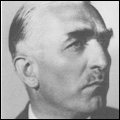 Le passage du démocratisme de la Jeune Droite au nationalisme du CPN s’accompagne d’un véritable engouement pour l’œuvre de Maurice Barrès. Plus tard, quand l’Action française, et, partant, toutes les formes de nationalisme français hostiles aux anciens empires d’Europe centrale, se retrouvera dans le collimateur du Vatican, le nouveau nationalisme belge de Nothomb et la frange du parti socialiste regroupée autour de Jules Destrée va plaider pour un “ressourcement italien”, suite au succès de la Marche sur Rome de Mussolini, que Destrée avait rencontré en Italie quand il allait, là-bas, soutenir les efforts des interventionnistes italiens avant 1915. Nothomb [ci-contre] traduira ce nouvel engouement italophile, post-barrèsien et post-maurrassien, en un roman, Le Lion ailé, paru en 1926, la même année où la condamnation de l’Action française est proclamée à Rome. Le Lion ailé, écrit C. Vanderpelen-Diagre, est une ode à la nouvelle Italie fasciste. Celle-ci est posée comme un modèle à imiter : il faut, pense Nothomb, favoriser une “contagion romaine”, ce qui conduira inévitablement à un “rajeunissement national”, par l’émergence d’un “ordre vivant”. Jules Destrée, le leader socialiste séduit par l’Italie, celle de l’interventionnisme et celle de Mussolini, salue la parution de ce roman et en encourage la lecture. La réception d’éléments idéologiques fascistes n’est donc pas le propre d’une droite catholique et nationale : elle a animé également le pilier socialiste dans le chef d’un de ses animateurs les plus emblématiques.
Le passage du démocratisme de la Jeune Droite au nationalisme du CPN s’accompagne d’un véritable engouement pour l’œuvre de Maurice Barrès. Plus tard, quand l’Action française, et, partant, toutes les formes de nationalisme français hostiles aux anciens empires d’Europe centrale, se retrouvera dans le collimateur du Vatican, le nouveau nationalisme belge de Nothomb et la frange du parti socialiste regroupée autour de Jules Destrée va plaider pour un “ressourcement italien”, suite au succès de la Marche sur Rome de Mussolini, que Destrée avait rencontré en Italie quand il allait, là-bas, soutenir les efforts des interventionnistes italiens avant 1915. Nothomb [ci-contre] traduira ce nouvel engouement italophile, post-barrèsien et post-maurrassien, en un roman, Le Lion ailé, paru en 1926, la même année où la condamnation de l’Action française est proclamée à Rome. Le Lion ailé, écrit C. Vanderpelen-Diagre, est une ode à la nouvelle Italie fasciste. Celle-ci est posée comme un modèle à imiter : il faut, pense Nothomb, favoriser une “contagion romaine”, ce qui conduira inévitablement à un “rajeunissement national”, par l’émergence d’un “ordre vivant”. Jules Destrée, le leader socialiste séduit par l’Italie, celle de l’interventionnisme et celle de Mussolini, salue la parution de ce roman et en encourage la lecture. La réception d’éléments idéologiques fascistes n’est donc pas le propre d’une droite catholique et nationale : elle a animé également le pilier socialiste dans le chef d’un de ses animateurs les plus emblématiques.
Nothomb avait créé, comme pendant à son CPN, les Jeunesses nationales en 1924. Ce mouvement appelle à un renforcement de l’exécutif, à une organisation corporative de l’État, à l’émergence d’un racisme défensif et d’un anti-maçonnisme, tout en prônant un catholicisme intransigeant (ce qui n’était pas du tout le cas dans l’Italie de l’époque, les Accords du Latran n’ayant pas encore été signés). Le CPN et les Jeunesses nationales entendant, de concert, poser un “compromis entre la raison et l’aventure”. Ce message apparaît trop pauvre pour d’autres groupes en gestation, dont la Jeunesse nouvelle et le groupe royaliste Pour l’autorité. Ces 2 groupes, fidèles en ce sens à la volonté du Roi, refusent le programme de politique étrangère du CPN et des Jeunesses nationales : ils veulent maintenir des rapports normaux avec les Pays-Bas, le Luxembourg et l’Allemagne. Ils insistent aussi sur la nécessité d’imposer une “direction de l’âme et de l’esprit”. En réclamant une telle “direction”, ils enclenchent ce que l’on pourrait appeler, en un langage gramscien, une “bataille métapolitique”, qu’ils qualifiaient, en reprenant certaines paroles du Cardinal Mercier, d’“apostolat par la plume”. Ils s’alignent ainsi sur la volonté de Pie XI de promouvoir un “catholicisme plus intransigeant”, en dépit de l’hostilité du Pontife romain à l’endroit de la francophilie maurrassienne du Primat de Belgique. Enfin, les 2 nouveaux groupes sur l’échiquier politico-métapolitique belge entendent suivre les injonctions de l’encyclique Quas Primas de 1925, proclamant la « royauté du Christ », du « Christus Rex », induisant ainsi le vocable “Rex” dans le vocabulaire politique du pilier catholique, ce qui conduira, après de nombreux avatars, à l’émergence du mouvement rexiste de Léon Degrelle, quand celui-ci rompra les ponts avec ses anciens associés du parti catholique. Le « catholicisme plus intransigeant », réclamé par Pie XI, doit s’imposer aux sociétés par des moyens modernes, par des technologies de communication comme la “TSF” et l’édition de masse (ce à quoi s’emploiera Degrelle, sur ordre de la hiérarchie catholique la plus officielle, au début des années 30).
Beauté, intelligence, moralité
L’appareil de cette offensive métapolitique s’est mis en place, par la volonté du Cardinal Mercier, au moins dès 1921. Celui-ci préside à la fondation de La Revue catholique des idées et des faits (RCIF), revue plus philosophique que théologique, Mercier n’étant pas théologien mais philosophe. Le Cardinal confie la direction de cette publication à l’Abbé René-Gabriel Van den Hout (1886-1969), professeur à l’Institut Saint Louis de Bruxelles et animateur du futur quotidien La Libre Belgique dans la clandestinité pendant la Première Guerre mondiale. L’Abbé Van den Hout avait également servi d’intermédiaire entre Mercier et Maurras. Volontairement le Primat de Belgique et l’Abbé Van den Hout vont user d’un ton et d’une verve polémiques pour fustiger les adversaires de ce renouveau à la fois catholique et national (ton que Degrelle et son caricaturiste Jam pousseront plus tard jusqu’au paroxysme). En 1924, avant la condamnation de Maurras et de l’Action française par le Vatican, les Abbés Van den Hout et Norbert Wallez, flanqués du franciscain Omer Englebert, envisagent de fonder une Action belge (AB), pendant de ses homologues française et espagnole (sur l’Accion Española, cf. Raùl Morodo, Los origenes ideologicos del franquismo : Accion Española, Alianza Editorial, Madrid, 1985). On a pu parler ainsi du “maurrassisme des trois abbés”. Le programme intellectuel de la RCIF et de l’AB (qui restera finalement en jachère) est de lutter contre les formes de romantisme, mouvement littéraire accusé de véhiculer un “subjectivisme relativiste” (donc un individualisme), ou, comme le décrira Carl Schmitt en Allemagne, un “occasionalisme”. Les abbés et leurs journalistes plaideront pour le classicisme, reposant, lui, à leurs yeux, sur 3 critères : la beauté, l’intelligence et la moralité (le livre de référence pour ce “classicisme” demeure celui d’Adrien de Meeüs, Le coup de force de 1660, Nouvelle Société d’Édition, Bruxelles, 1935 ; à ce propos, voir plus bas notre article « Années 20 et 30 : la droite de l’établissement francophone en Belgique, la littérature flamande et le ‘nationalisme de complémentarité’ »).
Revenons maintenant à l’ACJB. En 1921 également, les abbés Brohée et Picard (celui-là même qui mettra Degrelle en selle 10 ans plus tard) entament, eux aussi, un combat métapolitique. Leur objectif ? “Guider les lectures” par le truchement d’un organe intitulé Revue des auteurs et des livres. Au départ, cet organe se veut avant-gardiste mais proposera finalement des lectures figées, déduites d’une littérature bien-pensante. L’ACJB a donc des objectifs culturels et non pas politiques. C’est cette option métapolitique qui provoque une rupture qui se concrétise par la fondation de la Jeunesse nouvelle, parallèle à l’éparpillement de l’équipe de Durandal, dont les membres ont tous été appelés à de hautes fonctions administratives ou politiques. La Jeunesse nouvelle se donne pour but de “régénérer la Cité”, en y introduisant des ferments d’ordre et d’autorité. Elle vise l’instauration d’une monarchie antiparlementaire et nationaliste. Elle réagit à l’instauration du “suffrage universel pur et simple”, imposé par les socialistes, car celui-ci exprimerait la “déchéance morale et politique” d’une société (sa fragmentation et son émiettement en autant de petites républiques individuelles – la “verkaveling” dit-on en néerlandais ; cf. l’ouvrage humoristique mais intellectuellement fort bien charpenté de Rik Vanwalleghem, België Absurdistan – Op zoek naar de bizarre kant van België, Lannoo, Tielt, 2006, livre qui met en exergue l’effet final et contemporain de l’individualisme et de la disparition de toute éthique). La Jeunesse nouvelle s’oppose aussi au nouveau système belge né des “accords de Lophem” de 1919 où les acteurs sociaux et les partis étaient convenus d’un “deal”, que l’on entendait pérenniser jusqu’à la fin des temps en excluant systématiquement tout challengeur survenu sur la piste par le biais d’élections. Ce “deal” repose sur un canevas politique donné une fois pour toutes, posé comme définitif et indépassable, avec des forces seules autorisées à agir sur l’échiquier politico-parlementaire.
L’organe de la Jeunesse nouvelle, soit La Revue de littérature et d’action devient La Revue d’action dès que l’option purement métapolitique cède à un désir de s’immiscer dans le fonctionnement de la Cité. La revue d’Action devient ainsi, de 1924 à 1934, la porte-paroles du mouvement Pour l’autorité, dont la cheville ouvrière sera un jeune historien en vue de la matière de Bourgogne, Luc Hommel. Pour celui-ci, la revue est un “laboratoire d’idées” visant une réforme de l’État, qui reposera sur un renforcement de l’exécutif, sur le corporatisme et le nationalisme (à références “bourguignonnes”) et sur le suffrage familial, appelé à corriger les effets jugés pervers du “suffrage universel pur et simple”, imposé par les socialistes dès le lendemain de la Première Guerre mondiale. Hommel et ses amis préconisent de rester au sein du Parti Catholique, d’y être un foyer jeune et rénovateur. Les adeptes des thèses de la La Revue d’action ne rejoindront pas Rex. Parmi eux : Etienne de la Vallée-Poussin (qui dirigera un moment Le Vingtième siècle fondé par l’Abbé Wallez), Daniel Ryelandt (qui témoignera contre Léon Degrelle dans le fameux film que lui consacrera Charlier et qui était destiné à l’ORTF mais qui ne passera pas sur antenne après pression diplomatique belge sur les autorités de tutelle françaises), Gaëtan Furquim d’Almeida, Charles d’Aspremont-Lynden, Paul Struye, Charles du Bus de Warnaffe. La revue et le groupe Pour l’autorité cesseront d’exister en 1935, quand Hommel deviendra chef de cabinet de Paul van Zeeland. Plusieurs protagonistes de Pour l’autorité œuvreront ensuite au Centre d’Études pour la Réforme de l’État (CERE), dont Hommel, de la Vallée-Poussin et Ryelandt. Ils s’opposeront farouchement Rex en dépit d’une volonté commune de renforcer l’exécutif autour de la personne du Roi. L’idéal d’un renforcement de l’exécutif est donc partagé entre adeptes et adversaires de Rex.
La “Troisième voie” de Raymond De Becker
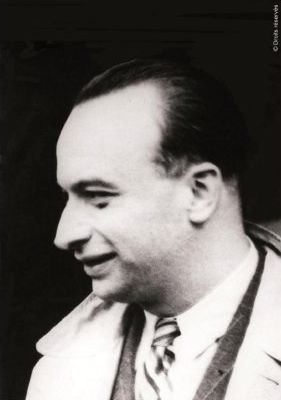 La période qui va de 1927 à 1939 est aussi celle d’une recherche fébrile de la “troisième voie”. C’est dans ce contexte qu’émergera une figure que l’on commence seulement à redécouvrir en Belgique, en ce début de deuxième décennie du XXIe siècle : Raymond De Becker. Contrairement à tous les mouvements que nous venons de citer, qui veulent demeurer au sein du pilier catholique, les hommes partis en quête d’une “troisième voie” cherchent à élargir l’horizon de leur engagement à toutes les forces sociales agissant dans la société. Ils ont pour point commun de rejeter le libéralisme (assimilé au “vieux monde”) et entendent valoriser toutes les doctrines exigeant une adhésion qu’ils apparentent à la foi : le catholicisme, le communisme, le fascisme, considérés comme seules forces d’avenir. C’est la démarche de ceux que Jean-Louis Loubet del Bayle nommera, dans son ouvrage de référence, les “non-conformistes des années 30”. Loubet del Bayle n’aborde que le paysage intellectuel français de l’époque. Qu’en est-il en Belgique ? Le cocktail que constituera la “troisième voie” ardemment espérée contiendra, francophonie oblige, bon nombre d’ingrédients français : Blondel (vu ses relations et son influence sur le Cardinal Mercier, sans oublier sa “doctrine de l’action”), Archambault, Mounier (le personnalisme), Gabriel Marcel (la distinction entre l’Être et l’Avoir), Maritain et Daniel-Rops. Après la condamnation de Maurras et de l’Action française par le Vatican, Jacques Maritain, que Paul Sérant classe comme un “dissident de l’Action française”, remplace, dès 1926, Maurras comme gourou de la jeunesse catholique et autoritaire en Belgique. R. de Becker et Henry Bauchau (toujours actif aujourd’hui, et qui nous livre un regard sur cette époque dans son tout récent récit autobiographique, L’enfant rieur, Actes Sud, 2011 ; R. De Becker y apparaît sous le prénom de “Raymond” ; voir surtout les pp. 157 à 166) sont les 2 hommes qui entretiendront une correspondance avec Maritain et participeront aux rencontres de Meudon. Du “nationalisme intégral de Maurras”, que voulait importer Nothomb, on passe à l’“humanisme intégral” de Maritain.
La période qui va de 1927 à 1939 est aussi celle d’une recherche fébrile de la “troisième voie”. C’est dans ce contexte qu’émergera une figure que l’on commence seulement à redécouvrir en Belgique, en ce début de deuxième décennie du XXIe siècle : Raymond De Becker. Contrairement à tous les mouvements que nous venons de citer, qui veulent demeurer au sein du pilier catholique, les hommes partis en quête d’une “troisième voie” cherchent à élargir l’horizon de leur engagement à toutes les forces sociales agissant dans la société. Ils ont pour point commun de rejeter le libéralisme (assimilé au “vieux monde”) et entendent valoriser toutes les doctrines exigeant une adhésion qu’ils apparentent à la foi : le catholicisme, le communisme, le fascisme, considérés comme seules forces d’avenir. C’est la démarche de ceux que Jean-Louis Loubet del Bayle nommera, dans son ouvrage de référence, les “non-conformistes des années 30”. Loubet del Bayle n’aborde que le paysage intellectuel français de l’époque. Qu’en est-il en Belgique ? Le cocktail que constituera la “troisième voie” ardemment espérée contiendra, francophonie oblige, bon nombre d’ingrédients français : Blondel (vu ses relations et son influence sur le Cardinal Mercier, sans oublier sa “doctrine de l’action”), Archambault, Mounier (le personnalisme), Gabriel Marcel (la distinction entre l’Être et l’Avoir), Maritain et Daniel-Rops. Après la condamnation de Maurras et de l’Action française par le Vatican, Jacques Maritain, que Paul Sérant classe comme un “dissident de l’Action française”, remplace, dès 1926, Maurras comme gourou de la jeunesse catholique et autoritaire en Belgique. R. de Becker et Henry Bauchau (toujours actif aujourd’hui, et qui nous livre un regard sur cette époque dans son tout récent récit autobiographique, L’enfant rieur, Actes Sud, 2011 ; R. De Becker y apparaît sous le prénom de “Raymond” ; voir surtout les pp. 157 à 166) sont les 2 hommes qui entretiendront une correspondance avec Maritain et participeront aux rencontres de Meudon. Du “nationalisme intégral de Maurras”, que voulait importer Nothomb, on passe à l’“humanisme intégral” de Maritain.
Le passage du maurrassisme au maritainisme implique une acceptation de la démocratie et de ses modes de fonctionnement, ainsi que du pluralisme qui en découle, et constate l’impossibilité de retrouver le pouvoir supratemporel du Saint Empire (vu de France, on peut effectivement affirmer que le Saint Empire, assassiné par Napoléon, ou l’Empire austro-hongrois, assassiné par Poincaré et Clemenceau, est une “forme morte” ; ailleurs, notamment en Autriche et en Hongrie, c’est moins évident... Il suffit d’évoquer les propositions très récentes du ministre hongrois Orban pour “resacraliser” l’État, notamment en le dépouillant du label de “république”). Par voie de conséquence, les maritainistes ne réclameront pas l’avènement d’une “Cité chrétienne”. En ce sens, ils vont plus loin que le Chanoine Jacques Leclercq (cf. infra) en Belgique, dont le souci, tout au long de son itinéraire, sera de maintenir une dose de divin et, subrepticement, un certain contrôle clérical sur la Cité, même aux temps d’après-guerre où le maritainisme débouchera partiellement sur la création et l’animation d’un parti politique “catho-communisant”, l’UDB (auquel adhèrera un William Ugeux, ancien journaliste au Vingtième Siècle et responsable de la “Sûreté de l’État” pour le compte du gouvernement Pierlot revenu de son exil londonien).
La Cité, rêvée par les adeptes d’une “troisième voie” d’inspiration maritainiste, est un “contrat entre fidèles et infidèles”, visant l’unité de la Cité, une unité minimale, certes, mais animée par l’amitié et la fraternité entre les hommes. Cette vision repose évidemment sur la définition “ouverte” que Maritain donne de l’humanisme. D’où la question que lui poseront finalement R. de Becker et Léon Degrelle : “Où sont les points d’appui ?”. En effet, l’idée d’une “humanité ouverte” ne permet pas de construire une Cité, qui, toujours, par la force des choses, aura des limites et/ou des frontières. Le maritainisme ne fera pas l’unité des anciens maurrassiens, des chercheurs de “troisièmes voies” voire des thomistes recyclés, modernisant leur discours, ou des “demanistes” socialistes non hostiles à la religion : le monde catholique se divisera en chapelles antagonistes qui le conduiront à l’implosion, à une sorte de guerre civile entre catholiques (surtout à partir de l’émergence de Rex) et à une sorte d’aggiornamento technocratique (qui, parti du technocratisme à l’américaine de Van Zeeland, donnera à terme la “plomberie” de Dehaene et son basculement dans les fiascos financiers postérieurs à l’automne 2008) ou à un discours assez hystérique et filandreux, évoquant justement le thème de l’humanisme maritainien, avec Joëlle Milquet qui abandonne l’appelation de Parti Social-Chrétien pour prendre celle de CdH (Centre Démocrate et Humaniste).
Marcel De Corte
 [En septembre 1975, Marcel De Corte accorde une entretien au Front de la jeunesse publié dans la rubrique "Europe-Jeunesse" du Nouvel Europe magazine (NEM)]
[En septembre 1975, Marcel De Corte accorde une entretien au Front de la jeunesse publié dans la rubrique "Europe-Jeunesse" du Nouvel Europe magazine (NEM)]
Quelles seront les expressions de l’humanisme intégral de Maritain en Belgique ? Il y aura notamment la Nouvelle équipe d’Yvan Lenain (1907-1965). Lenain est un philosophe thomiste de formation, qui veut “une Cité régénérée par la spiritualité”. Si, au départ, Lenain s’inscrit dans le sillage de Maritain, les évolutions et les aggiornamenti de ce dernier le contraindront à adopter une position thomiste plus traditionnelle. Par ailleurs, l’ouverture aux gens de gauche, les “infidèles” avec lesquels on aurait pu, le cas échéant, conclure un contrat, s’est avérée un échec. Le repli sur un thomisme plus classique est sans doute dû à l’influence d’une figure aujourd’hui oubliée, Marcel De Corte (1905-1994), professeur de philosophie à l’Université de Liège. De Corte, actif partout, notamment dans une revue peu suspecte de “catholicisme”, comme Hermès de Marc. Eemans et René Baert, est beaucoup plus ancré dans le catholicisme traditionnel (et aristotélo-thomiste) que ne l’était Lenain au départ : il rompra d’ailleurs avec Maritain en 1937, comme beaucoup d’autres auteurs belges, qui ne supportaient pas le soutien que l’humaniste intégral français apportait aux républicains espagnols (en Belgique, l’hostilité, y compris à gauche, à la République espagnole vient du fait que l’ambassadeur de Belgique, qui avait fait des locaux de l’ambassade du royaume un centre de la Croix Rouge, fut abattu par la police madrilène en 1936, laquelle vida ensuite le bâtiment de la légation de tous les réfugiés et éclopés qui s’y trouvaient et massacra les blessés dans la foulée). La pensée de De Corte, consignée dans 2 gros volumes parus dans les années 50, reste d’actualité : la notion de “dissociété”, qu’il a contribué à forger, est reprise aujourd’hui, même à gauche de l’échiquier politique français, notamment par le biais de l’ouvrage de Jacques Généreux, intitulé La dissociété (Seuil, 2006 ; pour se référer à De Corte directement, lire : Marcel De Corte, De la dissociété, éd. Remi Perrin, 2002).
Raymond De Becker : électron libre
Entre toutes les chapelles politico-littéraires de la Belgique francophone des années 30, R. De Becker va jouer le rôle d’intermédiaire, tout en demeurant un “électron libre”, comme le qualifie C. Vanderpelen-Diagre. De Becker, bien que catholique à l’époque (après la guerre, il ne le sera plus, lorsqu’il œuvrera, avec Louis Pauwels, dans le réseau Planète), ne plaide jamais pour une orthodoxie catholique : il incarne en effet un mysticisme très personnel, rétif à tout encadrement clérical. Dans ses efforts, il aura toujours l’appui de Maritain (avant la rupture suite aux événements d’Espagne) et du Chanoine Jacques Leclercq, qui fut d’abord un maritainiste plus ou mois conservateur avant de devenir, via les revues et associations qu’il animait, le fondateur du nouveau démocratisme chrétien, à tentations marxistes, de l’après-1945. De Becker va jouer aussi le rôle du relais entre les “non-conformistes” français et leurs homologues belges. En 1935, il se rend ainsi à la fameuse abbaye de Pontigny en Bourgogne, véritable laboratoire d’idées nouvelles où se rencontraient des hommes d’horizons différents soucieux de dépasser les clivages politiques en place. C’est à l’invitation de Paul Desjardins (2), qui organise en 1935 une rencontre sur le thème de l’ascétisme, que De Becker rencontre à Pontigny Nicolas Berdiaev, André Gide et Martin Buber.
Le reproche d’antisémitisme qu’on lui lancera à la tête, surtout dans le milieu assez abject des “tintinophobes” parisiens, ne tient pas, ne fût-ce qu’au regard de cette rencontre ; par ailleurs, les séminaires de Pontigny doivent être mis en parallèle avec leurs équivalents allemands organisés par le groupe de jeunesse Köngener Bund, auxquelles Buber participait également, aux côtés d’exposants communistes et nationaux-socialistes. En étudiant parallèlement de telles initiatives, on apprendra véritablement ce que fut le “non-conformisme” des années 30, dans le sillage de l’esprit de Locarno (sur l’impact intellectuel de Locarno : lire les 2 volumes publiés par le CNRS sous la direction de Hans Manfred Bock, Reinhart Meyer-Kalkus et Michel Trebitsch, Entre Locarno et Vichy – les relations culturelles franco-allemandes dans les années 30, CNRS éditions, 1993 ; cet ouvrage explore dans le détail les idéaux pacifistes, liés à l’idée européenne et au désir de sauvegarder le patrimoine de la civilisation européenne, dans le sillage d’Aristide Briand, du paneuropéisme à connnotations catholiques, de Friedrich Sieburg, des personnalistes de la revue L’Ordre nouveau, de Jean de Pange, des germanistes allemands Ernst Robert Curtius et Leo Spitzer, de la revue Europe, où officiera un Paul Colin, etc.).
De Becker, toujours soucieux de traduire dans les réalités politiques et culturelles belges les idées d’humanisme intégral de Maritain, accepte le constat de son maître-à-penser français : il n’est plus possible de rétablir l’harmonie du corporatisme médiéval dans les sociétés modernes ; il faut donc de nouvelles solutions et pour les promouvoir dans la société, il faut créer des organes : ce sera , d’une part, la Centrale politique de la jeunesse, présidée par André Mussche, dont le secrétaire sera De Becker, et, d’autre part, la revue L’esprit nouveau, où l’on retrouve l’ami de toujours, celui qui ne trahira jamais De Becker et refusera de le vouer aux gémonies, Henry Bauchau. Les objectifs que se fixent Mussche, De Becker et Bauchau sont simples : il faut traduire dans les faits la teneur des encycliques pontificales, en instaurant dans le pays une économie dirigée, anti-capitaliste, ou plus exactement anti-trust, qui garantira la justice sociale. Toujours dans l’esprit de Maritain, De Becker se fait le chantre d’une “nouvelle culture”, personnaliste, populaire et attrayante pour les non-croyants (comme on disait à l’époque). Il appellera cette culture nouvelle, la “culture communautaire”. Lors du Congrès de Malines de 1936, Bauchau se profile comme le théoricien et la cheville ouvrière de ce mouvement “communautaire” ; il est rédacteur depuis 1934 à La Cité chrétienne du Chanoine Leclercq, qui essaie de réimbriquer le christianisme (et, partant, le catholicisme) dans les soubresauts de la vie politique, animée par les totalitarismes souvent victorieux à l’époque, toujours challengeurs. Cette volonté de “ré-imbriquer” passe par des compromissions (qu’on espère passagères) avec l’esprit du temps (ouverture au socialisme voire au communisme).
“Communauté” et “Capelle-aux-Champs”
 En 1937, les “communautaires” maritainiens créent l’École supérieure d’humanisme, établie au n°21 de la Rue des Deux Églises à Bruxelles. Cette école prodigue des cours de “formation de la personnalité”, comprenant des leçons de philosophie, d’esthétique et d’histoire de l’art et de la culture. Le corps académique de cette école est prestigieux : on y retrouve notamment le Professeur De Corte. Cette école dispose également de relais, dont l’auberge “Au Bon Larron” de Pepinghem, où l’Abbé Leclercq reçoit ses étudiants et disciples, le cercle “Communauté” à Louvain chez la mère de De Becker, où se rend régulièrement Louis Carette, le futur Félicien Marceau. Enfin, dernier relais à signaler : le groupe de la “Capelle-aux-Champs”, sous la houlette bienveillante du Père Bonaventure Feuillien et du peintre Evany [Eugène van Nijverseel] (ami d’Hergé). Le créateur de Tintin fréquentera ce groupe, qui est nettement moins politisé que les autres et où l’on ne pratique pas la haute voltige philosophique. Quelles autres figures ont-elles fréquenté le groupe de la “Capelle-aux-Champs” ? La “Capelle-aux-Champs” ou Kapelleveld se situe exactement à l’endroit du campus de Louvain-en-Woluwé et de l’hôpital universitaire Saint Luc. C’était avant guerre un lieu idyllique, comme en témoigne la fresque ornant la station de métro “Vandervelde” qui y donne accès aujourd’hui.
En 1937, les “communautaires” maritainiens créent l’École supérieure d’humanisme, établie au n°21 de la Rue des Deux Églises à Bruxelles. Cette école prodigue des cours de “formation de la personnalité”, comprenant des leçons de philosophie, d’esthétique et d’histoire de l’art et de la culture. Le corps académique de cette école est prestigieux : on y retrouve notamment le Professeur De Corte. Cette école dispose également de relais, dont l’auberge “Au Bon Larron” de Pepinghem, où l’Abbé Leclercq reçoit ses étudiants et disciples, le cercle “Communauté” à Louvain chez la mère de De Becker, où se rend régulièrement Louis Carette, le futur Félicien Marceau. Enfin, dernier relais à signaler : le groupe de la “Capelle-aux-Champs”, sous la houlette bienveillante du Père Bonaventure Feuillien et du peintre Evany [Eugène van Nijverseel] (ami d’Hergé). Le créateur de Tintin fréquentera ce groupe, qui est nettement moins politisé que les autres et où l’on ne pratique pas la haute voltige philosophique. Quelles autres figures ont-elles fréquenté le groupe de la “Capelle-aux-Champs” ? La “Capelle-aux-Champs” ou Kapelleveld se situe exactement à l’endroit du campus de Louvain-en-Woluwé et de l’hôpital universitaire Saint Luc. C’était avant guerre un lieu idyllique, comme en témoigne la fresque ornant la station de métro “Vandervelde” qui y donne accès aujourd’hui.
C’est donc là, au beau milieu de ce sable et de ces bouleaux, que se retrouvaient Marcel Dehaye (qui écrira dans la presse collaborationniste sous le pseudonyme plaisant de “Jean de la Lune”), Jean Libert (qui sera épuré), Franz Weyergans (le père de François Weyergans) et Jacques Biebuyck. L’idéal qui y règne est l’idéal scout (ce qui attire justement Hergé) ; on n’y cause pas politique, on vise simplement à donner à ses contemporains “un cœur simple et bon”. L’initiative a l’appui de Jacques Leclercq. En dépit de ses connotations catholiques, le groupe se reconnaît dans un refus général de l’esprit clérical et bondieusard (voilà sans doute pourquoi Tintin, héros créé par la presse catholique, n’exprime aucune religion dans ses aventures. Comme bon nombre d’avatars du maritainisme, les amis de la “Capelle-aux-Champs” manifestent une volonté d’ouverture sur l’“ailleurs”. Mais leurs recherches implicites ne sont pas tournées vers une réforme en profondeur de la Cité. Les thèmes sont plutôt moraux, au sens de la bienséance de l’époque : on y réfléchit sur le péché, l’adultère, un peu comme dans l’œuvre de François Mauriac, qui avait appelé à jeter « un regard franc sur un monde dénaturé ».
L’esprit de “Capelle-aux-Champs” est également, dans une certaine mesure, un avatar lointain et original de l’impact de Bourget sur la littérature catholique du début du siècle (pour saisir l’esprit de ce groupe, lire entre autres ouvrages : J. Libert, Capelle aux Champs, Les écrits, Bruxelles, 1941 [5°éd.] et Plénitude, Les écrits, 1941 ; J. Biebuyck, Le rire du cœur, Durandal, Bruxelles, [s. d., probablement après guerre] et Le serpent innocent, Casterman, Tournai, 1971 [préf. de F. Weyergans] ; Franz Weyergans, Enfants de ma patience, éd. Universitaires, Paris, 1964 et Raisons de vivre, Les écrits, 1944 ; cet ouvrage est un hommage de F. Weyergans à son propre père, exactement comme son fils François lui dédiera Franz et François en 1997).
Notons enfin que les éditions “Les Écrits” ont également publié de nombreuses traductions de romans scandinaves, finnois et allemands, comme le firent par ailleurs les fameuses éditions de “La Toison d’Or”, elles carrément collaborationnistes pendant la Seconde Guerre mondiale, dans le but de dégager l’opinion publique belge de toutes les formes de parisianismes et de l’ouvrir à d’autres mondes. Le traducteur des éditions “Les Écrits” fut-il le même que celui des éditions “La Toison d’Or”, soit l’Israélite estonien Sulev J. Kaja (alias Jacques Baruch, 1919-2002), condamné sévèrement par les tribunaux incultes de l’épuration et sauvé de la misère et de l’oubli par Hergé lors du lancement de l’hebdomadaire Tintin dès 1946 ? Le pays aurait bien besoin de quelques modestes traducteurs performants de la trempe d’un Sulev J. Kaja...) (2).
Revenons aux animateurs du groupe de la Capelle-aux-Champs. Il y a d’abord Marcel Dehaye (1907-1990) qui explore le monde de l’enfance, exalte la pureté et l’innocence et, avec son personnage Bob ou l’enfant nouveau campe un garçonnet « qui ne sera ni banquier ni docteur ni soldat ni député ». Pendant la Deuxième Guerre mondiale, Dehaye collabora au Soir et au Nouveau Journal sous le pseudonyme de “Jean de la Lune”, ce qui le sauvera sans nul doute des griffes de l’épuration : il aurait été en effet du plus haut grotesque de lire une manchette dans la presse signalant que « l’auditorat militaire a condamné Jean de la Lune à X années de prison et à l’indignité nationale ».
Jacques Biebuyck (1909-1993) est issu, lui, d’une famille riche, ruinée en 1929. Il a fait un séjour de 3 mois à la Trappe. Il a d’abord été fonctionnaire au ministère de l’intérieur puis journaliste. C’est un ami de Raymond De Becker. Il professe un anti-intellectualisme et prône de se fier à l’instinct. Pour lui, la jeunesse doit demeurer “vierge de toute corruption politique”. Biebuyck rejette la politique, qui se déploie dans un “monde de malhonnêtes”. Il renoue là avec un certain esprit de l’ACJB à ses débuts, où le souci culturel primait l’engagement proprement politique. L’illustrateur des œuvres de Biebuyck, et d’autres protagonistes de la Capelle-aux-Champs fut Pierre Ickx, ami d’Hergé et spécialisé dans les dessins de scouts idéalisés.
Jean Libert (1913-1981), lui, provient d’une famille qui s’était éloignée de la religion, parce qu’elle estimait que celle-ci avait basculé dans le “mercantilisme”. À 16 ans, Libert découvre le mouvement scout (comme Hergé auparavant). Ses options spirituelles partent d’une volonté de suivre les enseignements de Saint François d’Assise, comme le préconisait aussi le Père Bonaventure Feuillien. “Nono”, le héros de J. Libert dans son livre justement intitulé Capelle-aux-Champs (cf. supra), va incarner cette volonté. Il s’agit, pour l’auteur et son héros, de conduire l’homme vers une vie joyeuse et digne, héroïque et féconde. Libert se fait le chantre de l’innocence, de la spontanéité, de la pureté (des sentiments) et de l’instinct.
Jean Libert et la “mystique belge”
En 1938, avec Antoine Allard, Jean Libert opte pour l’attitude pacifiste et neutraliste, induite par le rejet des accords militaires franco-belges et la déclaration subséquente de neutralité qu’avait proclamée le Roi Léopold III en octobre 1936, tout en arguant qu’une conflagration qui embraserait toute l’Europe entraînerait le déclin irrémédiable du Vieux Continent (cf. les idées pacifistes de Maurice Blondel, à la fin de sa vie, consignée dans son ouvrage, Lutte pour la civilisation et philosopohie de la paix, Flammarion, 1939 ; cet ouvrage est rédigé dans le même esprit que le “manifeste neutraliste” et inspire, fort probablement, le discours royal aux belligérants dès septembre 1939). J. Libert signe donc ce fameux manifeste neutraliste des intellectuels, notamment patronné par Robert Poulet.
Parallèlement à cet engagement neutraliste, dépourvu de toute ambigüité, Libert plaide pour l’éclosion d’une “mystique belge” que d’autres, à la suite de l’engouement de Maeterlinck pour Ruusbroec l’Admirable au début du siècle, voudront à leur tour raviver. On pense ici à Marc. Eemans et René Baert, qui, outre Ruusbroec (non considéré comme hérétique par les catholiques sourcilleux car il refusera toujours de dédaigner les “œuvres”), réhabiliteront Sœur Hadewijch, Harphius, Denys le Chartreux et bien d’autres figures médiévales (cf. Marc. Eemans, Anthologie de la Mystique des Pays-Bas, éd. de la Phalange / J. Beernaerts, Bruxelles, s. d. ; il s’agit des textes sur les mystiques des Pays-Bas publiés dans les années 30 dans la revue Hermès). R. De Becker se penchera également sur la figure de Ruusbroec, notamment dans un article du Soir, le 11 mars 1943 (« Quand Ruysbroeck l’Admirable devenait prieur à Groenendael »). Comme dans le cas du mythe bourguignon, inauguré par Luc Hommel (cf. supra) et Paul Colin, le recours à la veine mystique médiévale participe d’une volonté de revenir à des valeurs nées du sol entre Somme et Rhin, pour échapper à toutes les folies idéologiques qui secouaient l’Europe, à commencer par le laïcisme républicain français, dont la nuisance n’a pas encore cessé d’être virulente, notamment par le filtre de la “nouvelle philosophie” d’un marchand de “prêt-à-penser” brutal et sans nuances comme Bernard-Henri Lévy (classé récemment par Pascal Boniface comme « l’intellectuel faussaire », le plus emblématique).
Fidèle à son double engagement neutraliste et mystique, Jean Libert voudra œuvrer au relèvement moral et physique de la jeunesse, en prolongeant l’effet bienfaisant qu’avait le scoutisme sur les adolescents. Au lendemain de la défaite de mai 1940, J. Libert rejoint les Volontaires du Travail, regroupés autour de Henry Bauchau, Théodore d’Oultremont et Conrad van der Bruggen. Ces Volontaires du travail devaient prester des travaux d’utilité publique, de terrassement et de déblaiement, dans tout le pays pour effacer les destructions dues à la campagne des 18 jours de mai 1940. C’était également une manière de soustraire des jeunes aux réquisitions de l’occupant allemand et de maintenir sous bonne influence “nationale” des équipes de jeunes appelés à redresser le pays, une fois la paix revenue. Pendant la guerre, J. Libert collaborera au Nouveau Journal de Robert Poulet, ce qui lui vaudra d’être épuré, au grand scandale d’Hergé qui estimait, à juste titre, que la répression tuait dans l’œuf les idéaux positifs d’innocence, de spontanéité et de pureté (le “cœur pur” de Tintin au Tibet). Jamais le pays n’a pu se redresser moralement, à cause de cette violence “officielle” qui effaçait les ressorts de tout sursaut éthique, à coup de décisions féroces prises par des juristes dépourvus de “Sittlichkeit” et de culture. On voit les résultats après plus de 6 décennies...
Franz Weyergans
Parmi les adeptes du groupe de la “Capelle-aux-Champs”, signalons encore Franz Weyergans (1912-1974), père de François Weyergans. Lui aussi s’inspire de Saint François d’Assise. Il sera d’abord journaliste radiophonique comme Biebuyck. La littérature, pour autant qu’elle ait retenu son nom, se rappellera de lui comme d’un défenseur doux mais intransigeant de la famille nombreuse et du mariage. Weyergans plaide pour une sexualité pure, en des termes qui apparaissent bien désuets aujourd’hui. Il fustige notamment, sans doute dans le cadre d’une campagne de l’Église, l’onanisme.
Franz Weyergans est revenu sous les feux de la rampe lorsque son fils François, publie chez Grasset Franz et François une sorte de dialogue post mortem avec son père. Le livre recevra un prix littéraire, le Grand Prix de la Langue Française (1997). Il constitue un très beau dialogue entre un père vertueux, au sens où l’entendait l’Église avant-guerre dans ses recommandations les plus cagotes à l’usage des tartufes les plus assomants, et un fils qui s’était joyeusement vautré dans une sexualité picaresque et truculente dès les années 50 qui annonçaient déjà la libération sexuelle de la décennie suivante (avec Françoise Sagan not.). Deux époques, deux rapports à la sexualité se télescopent dans Franz et François mais si François règle bien ses comptes avec Franz — et on imagine bien que l’affrontement entre le paternel et le fiston a dû être haut en couleurs dans les décennies passées — le livre est finalement un immense témoignage de tendresse du fils à l’égard de son père défunt.
L’angoisse profonde et terrible qui se saisit d’Hergé dès le moment où il rencontre celle qui deviendra sa seconde épouse, Fanny Vleminck, et lâche progressivement sa première femme Germain Kieckens, l’ancienne secrétaire de l’Abbé Wallez au journal Le Vingtième siècle, ne s’explique que si l’on se souvient du contexte très prude de la “Capelle-aux-Champs” ; de même, son recours à un psychanalyste disciple de Carl Gustav Jung à Zürich ne s’explique que par le tournant jungien qu’opèreront R. De Becker, futur collaborateur de la revue Planète de Louis Pauwels, et Henry Bauchau dès les années 50.
Biebuyck et Weyergans, même si nos contemporains trouveront leurs œuvres surannées, demeurent des écrivains, peut-être mineurs au regard des critères actuels, qui auront voulu, et parfois su, conférer une “dignité à l’ordinaire”, comme le rappelle C. Vanderpelen-Diagre. Jacques Biebuyck et Franz Weyergans, sans doute contrairement à Tintin (du moins dans une certaine mesure), ne visent ni le sublime ni l’épique : ils estiment que “la vie quotidienne est un pèlérinage ascétique”.
De l’ACJB à Rex
Mais dans toute cette effervescence, inégalée depuis lors, quelle a été la genèse de Rex, du mouvement rexiste de Léon Degrelle ? Les 29, 30 et 31 août 1931 se tient le congrès de l’ACJB, présidé par Léopold Levaux, auteur d’un ouvrage apologétique sur Léon Bloy (Léon Bloy, éd. Rex, Louvain, 1931). À la tribune : Monseigneur Ladeuze, Recteur magnifique de l’Université Catholique de Louvain, l’Abbé Jacques Leclercq et Léon Degrelle, alors directeur des Éditions Rex, fondées le 15 janvier 1931. Le futur fondateur du parti rexiste se trouvait donc à la fin de l’été 1931 aux côtés des plus hautes autorités ecclésiastiques du pays et du futur mentor de la démocratie chrétienne, qui finira par se situer très à gauche, très proche des communistes et du résistancialisme qu’ils promouvaient à la fin des années 40. L’organisation de ce congrès visait le couronnement d’une série d’activités apostoliques dans les milieux catholiques et, plus précisément, dans le monde de la presse et de l’édition, ordonnées très tôt, sans doute dès le lendemain de la Première Guerre mondiale, par le cardinal Mercier lui-même. L’année de sa mort, qui est aussi celle de la condamnation de l’Action française par le Vatican (1926), est suivie rapidement par la fameuse “substitution de gourou” dans les milieux catholiques belges : on passe de Maurras à Maritain, du nationalisme intégral à l’humanisme intégral. En cette fin des années 20 et ce début des années 30, Maritain n’a pas encore une connotation de gauche : il ne l’acquiert qu’après son option en faveur de la République espagnole.
C’est une époque où le futur Monseigneur Picard s’active, notamment dans le groupe La nouvelle équipe et dans les Cahiers de la jeunesse catholique. En août 1931, à la veille de la rentrée académique de Louvain, il s’agit de promouvoir les éditions Rex, sous la houlette de Degrelle (c’est pour cela qu’il est hissé sur le podium à côté du Recteur), de Robert du Bois de Vroylande (1907-1944) et de Pierre Nothomb. En 1932, l’équipe, dynamisée par Degrelle, lance l’hebdomadaire Soirées qui parle de littérature, de théâtre, de radio et de cinéma. Les catholiques, auparavant rétifs à toutes les formes de modernité même pratiques, arraisonnent pour la première fois, avec Degrelle, le secteur des loisirs. La forme, elle aussi, est moderne : elle fait usage des procédés typographiques américains, utilise en abondance la photographie, etc. La parution de Soirées, hebdomadaire en apparence profane, apporte une véritable innovation graphique dans le monde de la presse belge. Les éditions Rex ont été fondées “pour que les catholiques lisent”. L’objectif avait donc clairement pour but de lancer une offensive “métapolitique”.
L’équipe s’étoffe : autour de Léon Degrelle et de Robert du Bois de Vroylande, de nouvelles plumes s’ajoutent, dont celle d’Aman Géradin (1910-2000) et de José Streel (1911-1946), auteur de 2 thèses, l’une sur Péguy, l’autre sur Bergson. Plus tard, Pierre Daye, Joseph Mignolet et Henri-Pierre Faffin rejoignent les équipes des éditions Rex. Celles-ci doivent offrir aux masses catholiques des livres à prix réduit, par le truchement d’un système d’abonnement. C’est le pendant francophone du Davidsfonds catholique flamand (qui existe toujours et est devenu une maison d’édition prestigieuse). Cependant, l’épiscopat, autour des ecclésiastiques Picard et Ladeuze, n’a pas mis tous ses œufs dans le même panier. À côté de Rex, il patronne également les Éditions Durandal, sous la direction d’Edouard Ned (1873-1949). Celui-ci bénéficie de la collaboration du Chanoine Halflants, de Firmin Van den Bosch, de Georges Vaxelaire, de Thomas Braun, de Léopold Levaux et de Camille Melloy. L’épiscopat a donc créé une concurrence entre Rex et Durandal, entre Degrelle et Ned. C’était sans doute, de son point de vue, de bonne guerre. Les éditions Durandal, offrant des ouvrages pour la jeunesse, dont nous disposions à la bibliothèque de notre école primaire (vers 1964-67), continueront à publier, après la mort de Ned, jusqu’au début des années 60.
Degrelle rompt l’unité du parti catholique
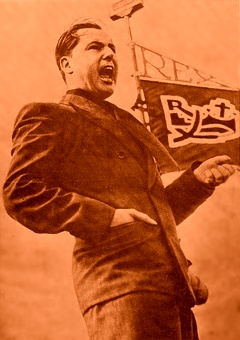 Léon Degrelle veut faire triompher son équipe jeune (celle de Ned est plus âgée et a fait ses premières armes du temps de la Jeune Droite de Carton de Wiart). Il multiplie les initiatives, ce qui donne une gestion hasardeuse. Les stocks d’invendus sont faramineux et les productions de Rex contiennent déjà, avant même la formation du parti du même nom, des polémiques trop politiques, ce qui, ne l’oublions pas, n’est pas l’objectif de l’ACJB, organisation plus culturelle et métapolitique que proprement politique et à laquelle les éditions Rex sont théoriquement inféodées. Degrelle est désavoué et Robert du Bois de Vroylande quitte le navire, en dénonçant vertement son ancien associé. Meurtri, accusé de malversations, Degrelle se venge par le fameux coup de Courtrai, où, en plein milieu d’un congrès du parti catholique, il fustige les “banksters”, c’est-à-dire les hommes politiques qui ont créé des caisses d’épargne et ont joué avec l’argent que leur avaient confié des petits épargnants pieux qui avaient cru en leurs promesses (comme aujourd’hui pour la BNP et Dexia, sauf que la disparition de toute éthique vivante au sein de la population n’a suscité aucune réaction musclée, comme en Islande ou en Grèce par ex.).
Léon Degrelle veut faire triompher son équipe jeune (celle de Ned est plus âgée et a fait ses premières armes du temps de la Jeune Droite de Carton de Wiart). Il multiplie les initiatives, ce qui donne une gestion hasardeuse. Les stocks d’invendus sont faramineux et les productions de Rex contiennent déjà, avant même la formation du parti du même nom, des polémiques trop politiques, ce qui, ne l’oublions pas, n’est pas l’objectif de l’ACJB, organisation plus culturelle et métapolitique que proprement politique et à laquelle les éditions Rex sont théoriquement inféodées. Degrelle est désavoué et Robert du Bois de Vroylande quitte le navire, en dénonçant vertement son ancien associé. Meurtri, accusé de malversations, Degrelle se venge par le fameux coup de Courtrai, où, en plein milieu d’un congrès du parti catholique, il fustige les “banksters”, c’est-à-dire les hommes politiques qui ont créé des caisses d’épargne et ont joué avec l’argent que leur avaient confié des petits épargnants pieux qui avaient cru en leurs promesses (comme aujourd’hui pour la BNP et Dexia, sauf que la disparition de toute éthique vivante au sein de la population n’a suscité aucune réaction musclée, comme en Islande ou en Grèce par ex.).
Degrelle, en déboulant avec ses “jeunes plumes” dans le congrès des “vieilles barbes”, a commis l’irréparable aux yeux de tous ceux qui voulaient maintenir l’unité du parti catholique, même si, parfois, ils entendaient l’infléchir vers une “voie italienne” (comme Nothomb avec son “Lion ailé”) ou vers un maritainisme plus à gauche sur l’échiquier politique, ouvert aux socialistes (notamment aux idées planistes de Henri De Man et pour mettre en selle des coalitions catholiques / socialistes) voire carrément aux idées marxistes (pour absorber une éventuelle contestation communiste). De l’équipe des éditions Rex, seuls Daye, Streel, Mignolet et Géradin resteront aux côtés de Degrelle : ils forment un parti concurrent, le parti rexiste qui remporte un formidable succès électoral en 1936, fragilisant du même coup l’épine dorsale de la Belgique d’après 1918, forgée lors des fameux accords de Lophem. Ceux-ci prévoyaient une démocratie réduite à une sorte de circuit fermé sur 3 formations politiques seulement : les catholiques, les libéraux et les socialistes, avec la bénédiction des “acteurs sociaux”, les syndicats et le patronat. Les Accords de Lophem ne prévoyaient aucune mutation politique, aucune irruption de nouveautés organisées dans l’enceinte des Chambres. Et voilà qu’en 1936, 3 partis, non prévus au programme de Lophem, entrent dans l’hémicycle du parlement : les nationalistes flamands du VNV, les rexistes et les communistes.
Toute innovation est assimilée à Rex et à la Collaboration
Les rexistes (en même temps que les nationalistes flamands et les communistes), en gagnant de nombreux sièges lors des élections de 1936, relativisent ipso facto les fameux accords de Lophem et fragilisent l’édifice étatique belge, dont les critères de fonctionnement avaient été définis à Lophem. Depuis lors, toute nouveauté, non prévue par les accords de Lophem, est assimilée à Rex ou au mouvement flamand. Fin des années 60 et lors des élections de 1970, des affiches anonymes, placardées dans tout Bruxelles, ne portaient qu’une seule mention : “FDF = REX”, alors que les préoccupations du parti de Lagasse n’avaient rien de commun avec celles du parti de Degrelle. Ce n’est pas le contenu idéologique qui compte, c’est le fait d’être simplement challengeur des accords de Lophem. Même scénario avec la Volksunie de Schiltz (qui, pour sauver son parti, fera son aggiornamento belgicain, lui permettant de se créer une niche nouvelle dans un scénario de Lophem à peine rénové). Et surtout même scénario dès 1991 avec le Vlaams Blok, assimilé non seulement à Rex mais à la collaboration et, partant, aux pires dérives prêtées au nazisme et au néo-nazisme, surtout par le cinéma américain et les élucubrations des intellectuels en chambre de la place de Paris.
Le choc provoqué par le rexisme entraîne également l’implosion du pilier catholique belge, jadis très puissant. Le voilà disloqué à jamais : une recomposition sur la double base de l’idéal d’action de Blondel (avec exigence éthique rigoureuse) et de l’idéal de justice sociale de Carton de Wiart et de l’Abbé Daens, s’est avérée impossible, en dépit des discours inlassablement répétés sur l’humanisme, le christianisme, les valeurs occidentales, la notion de justice sociale, la volonté d’être au “centre” (entre la gauche socialiste et la droite libérale), etc. Une telle recomposition, s’il elle avait été faite sur base de véritables valeurs et non sur des bricolages idéologiques à base de convictions plus sulpiciennes que chrétiennes, plus pharisiennes que mystiques, aurait permit de souder un bloc contre le libéralisme et contre toutes les formes, plus ou moins édulcorées ou plus ou moins radicales, de marxisme, un bloc qui aurait véritablement constitué un modèle européen et praticable de “Troisième Voie” dès le déclenchement de la guerre froide après le coup de Prague de 1948.
Cet idéal de “Troisième Voie”, avec des ingrédients plus aristotéliciens, grecs et romains, aurait pu épauler avec efficacité les tentatives ultérieures de Pierre Harmel, un ancien de l’ACJB, de rapprocher les petites puissances du Pacte de Varsovie et leurs homologues inféodées à l’OTAN (sur Harmel, lire : Vincent Dujardin, Pierre Harmel, Le Cri, Bruxelles, 2004). L’absence d’un pôle véritablement personnaliste (mais un personnalisme sans les aggiornamenti de Maritain et des personnalistes parisiens affectés d’un tropisme pro-communiste et craignant de subir les foudres du tandem Sartre-De Beauvoir) n’a pas permis de réaliser cette vision harmélienne d’une “Europe Totale” (probablement inspirée de Blondel, cf. supra), qui aurait parfaitement pu anticiper de 20 ans la “perestroïka” et la “glasnost” de Gorbatchev.
Une véritable implosion du bloc catholique
Le pilier catholique de l’après-guerre n’ose plus revendiquer expressis verbis un personnalisme éthique exigeant. Fragmenté, il erre entre plusieurs môles idéologiques contradictoires : celui d’un personnalisme devenu communisant avec l’UDB (où se retrouve un William Ugeux, ex-journaliste du Vingtième Siècle de l’Abbé Wallez, l’admirateur sans faille de Maurras et de Mussolini !), qui, après sa dissolution dans le désintérêt général, va générer toutes les variantes éphémères du “christianisme de gauche”, avec le MOC et en marge du MOC (Mouvement Ouvrier Chrétien) ; celui du technocratisme qui, comme toutes les autres formes de technocratisme, exclut la question des valeurs et de l’éthique de l’orbite politique et laisse libre cours à toutes les dérives du capitalisme et du libéralisme, provoquant à terme le passage de bon nombre d’anciens démocrates chrétiens du PSC, ceux qui confondent erronément “droite” et “libéralisme”, dans les rangs des PLP, PRL et MR libéraux ; le technocratisme fut d’abord importé en Belgique par Paul Van Zeeland, immédiatement dans la foulée de sa victoire contre Rex, lors des élections de 1937, provoquées par Degrelle qui espérait déclencher un nouveau raz-de-marée en faveur de son parti.
Van Zeeland avait besoin d’un justificatif idéologique en apparence neutre pour pouvoir diriger une coalition regroupant l’extrême-gauche communiste, les socialistes, les libéraux et les catholiques. Les avatars multiples du premier technocratisme zeelandien déboucheront, dans les années 90, sur la “plomberie” de Jean-Luc Dehaene, c’est-à-dire sur les bricolages politiciens et institutionnels, sur les expédiants de pure fabrication, menant d’abord à une Belgique sans personnalité aucune (et à une Flandre et à une Wallonie sans personnalité séduisante) puis sur une “absurdie”, un “Absurdistan”, tel que l’a décrit l’écrivain flamand Rik Vanwalleghem (cf. supra). Enfin, on a eu des formes populistes vulgaires dans les années 60 avec les “listes VDB” de Paul Van den Boeynants qui ont débouché au fil du temps dans le vaudeville, le stupre et la corruption. Autre résultat de la mise entre parenthèse des questions axiologiques ou éthiques...
De l’UDB au PSC et du PSC au CdH, l’évacuation de toutes les “valeurs” structurantes a été perpétrée parce que Degrelle avait justifié son “Coup de Courtrai”, son “Opération Balais” et ses éditoriaux au vitriol au nom de l’éthique, une éthique qu’il avait d’abord partagée avec bon nombre d’hommes politiques ou d’écrivains catholiques (qui ne deviendront ni rexistes ni collaborateurs). Toute référence à une éthique (catholique ou maritainiste au sens du premier Maritain) pourrait autoriser, chez les amateurs de théories du complot et les maniaques de l’amalgame, un rapprochement avec Rex, donc avec la collaboration, ce que l’on voulait éviter à tout prix, en même temps que les campagnes de presse diffamatoires, où l’adversaire est toujours, quoi qu’il fasse ou dise, un “fasciste”. Cette éthique pouvait certes indiquer une “proximité” avec Rex, sur le plan philosophique, mais non une identité, vu les différences notoires entre Rex et ses adversaires (catholiques) sur les réformes à promouvoir aux plans politique et institutionnel. Le fait que Degrelle ait justifié ses actions perturbantes de l’ordre établi à Lophem au nom d’une certaine éthique catholique, théorisée notamment par José Streel, qui lui ajoute des connotations populistes tirées de Péguy (“les petites et honnêtes gens”), n’exclut pas qu’un pays doit être structuré par une éthique née de son histoire, comme des auteurs aussi différents que Colin, Hommel, Streel, Libert, De Becker ou Bauchau l’ont réclamé dans les années 30.
En changeant de nom, le PSC devenu CdH (Centre démocrate et humaniste) optait pour un retour à l’universalisme gauchisant du dernier Maritain, s’ôtant par là même tout socle éthique et concret sous prétexte qu’on ne peut exiger de la rigueur au risque de froiser d’autres croyants ou des “incroyants” ; on se privait volontairement d’une éthique capable de redonner vigueur à la vie politique du royaume. L’idéologie vague du CdH, sans plus beaucoup de volonté affichée d’ancrage local en Wallonie et même sans plus aucun ancrage catholique visibilisé, laisse un pan (certes de plus en plus ténu en Wallonie mais qui se fortifie à Bruxelles grâce aux voix des immigrants subsahariens) de l’électorat ouvert à toutes les dérives du festivisme contemporain ou d’un utilitarisme libéral, néo-libéral et sans profondeur : la société marchande, la dictature des banquiers et des financiers, ne rencontre plus aucun obstacle dans l’intériorité même des citoyens. Cette fraction de l’électorat, que l’on juge, à tort, susceptible d’opposer un refus éthique, puisque “religieux” ou “humaniste”, à la dicature médiatique, festiviste et utilitariste dominante, est alors “neutralisé” et ne peut plus contribuer à redonner vigueur à la virtù de machiavélienne mémoire. De cette façon, on navigue de Charybde en Scylla. La spirale du déclin moral, physique et politique est en phase descendante et “catamorphique” sans remède apparent.
La théorie de Pitirim Sorokin pour théoriser la situation
Quel outil théorique pourrait-on utiliser pour saisir toute la problématique du catholicisme belge, où il y a eu d’abord exigence d’éthique dans le sillage du Cardinal Mercier, sous l’impulsion directe de celui-ci, puis déconstruction progressive de cette exigence éthique, après le paroxysme du début des années 30 (avec l’ouvrage de Monseigneur Picard, Le Christ-Roi, éd. Rex, Louvain, 1929). La condamnation de l’Action française par Rome en 1926, le remplacement de l’engouement pour l’Action Française par l’universalisme catholique de Maritain, qui deviendra vite vague et dépourvu de socle, la tentation personnaliste théorisée par Mounier, le choc du rexisme qui fait imploser le bloc catholique sont autant d’étapes dans cette recherche fébrile de nouveauté au cours des années 30 et 40.
Le sociologue russe blanc Pitirim Sorokin (1889-1968), émigré aux États-Unis après la révolution bolchevique, nous offre sans doute, à nos yeux, la meilleure clef interprétative pour comprendre ce double phénomène contradictoire d’exigence éthique, parfois véhémente, et de deconstruction frénétique de toute assise éthique, qui a travaillé le monde politico-culturel catholique de la Belgique entre 1884 et 1945 et même au-delà. P. Sorokin définit 3 types de mentalité à l’œuvre dans le monde, quand il s’agit de façonner les sociétés. Il y a la mentalité “ideational”, la mentalité “sensate” et la mentalité intermédiaire entre “ideational” et “sensate”, l’”idealistic”. Pour Sorokin, les hommes animés par la mentalité “ideational” sont mus par la foi, la mystique et/ou l’intuition. Ils créent les valeurs artistiques, esthétiques, suscitent le Beau par leurs actions. Certains sont ascètes. Ceux qui, en revanche, sont animés par la mentalité “sensate”, entendent dominer le monde matériel en usant d’artifices rationnels. Les “idealistic” détiennent des traits de caractère communs aux 2 types. La dynamique sociale repose sur la confrontation ou la coopération entre ces 3 types d’hommes, sur la disparition et le retour de ces types, selon des fluctuations que l’historien des idées ou de l’art doit repérer.
La civilisation grecque connaît ainsi une première phase “ideational” (quand émerge la “période axiale” selon Karl Jaspers ou Karen Armstrong), suivie d’une phase “idealistic” puis d’une phase de décadence “sensate”. De même, le Moyen Âge ouest-européen commence par une phase “ideational”, qui dure jusqu’au XIIe siècle, suivie d’une phase hybride de type “idealistic” et du commencement d’une nouvelle phase “sensate”, à partir de la fin du XVe siècle. Sorokin estimait que le début du XXe siècle était la phase terminale de la période “sensate” commencée fin du XVe siècle et qu’une nouvelle phase “ideational” était sur le point de faire irruption sur la scène mondiale. La vision du temps selon Sorokin n’est donc pas linéaire ; elle n’est pas davantage cyclique : elle est fluctuante et véhicule des valeurs toujours immortelles, toujours susceptibles de revenir à l’avant-plan, en dépit des retraits provisoires (le “withdrawal-and-return” de Toynbee), qui font croire à leur disparition. Une volonté bien présente dans un groupe d’hommes à la mentalité “ideational” peut faire revenir des valeurs non matérielles à la surface et amorcer ainsi une nouvelle période féconde dans l’histoire d’une civilisation (cf. Prof. Dr. S. Hofstra, « Pitirim Sorokin », in : Hoofdfiguren uit de sociologie, deel 1, Het Spectrum, coll. “Aula”, nr. 527, Utrecht / Antwerpen, 1974, pp. 202-220).
De l’”ideational” au “sensate”
La phase “ideational” est celle qui recèle encore la virtus politique romaine, ou la virtù selon Machiavel. Elle correspond au sentiment religieux de nos auteurs catholiques (rexisants ou non) et à leur volonté d’œuvrer au Beau et au Bien. Face à ceux-ci, les détenteurs de la mentalité “sensate” qui, dans une première phase, sont matérialistes ou technocratistes ; ils ne jugent pas la recherche du profit comme moralement indéfendable ; ils seront suivis par des “sensate” encore plus radicaux dans le sillage de mai 68 et du festivisme qui en découle puis dans la vague néo-libérale qui a conduit l’Europe à la ruine, surtout depuis l’automne 2008. Le bloc catholique en liquéfaction dans le paysage politique belge a d’abord été animé par une frange jeune, nettement perceptible comme “ideational”, une frange au sein de laquelle émergera un conflit virulent, celui qui opposera les adeptes et les adversaires de Rex.
Au départ, ces 2 factions “ideational” partageaient les mêmes aspirations éthiques et les mêmes vues politiques (renforcement de l’exécutif, etc.) : les uns feront des compromis avec les tenants des idéologies “sensate” pour ne pas être marginalisés ; les autres refuseront tout compromis et seront effectivement marginalisés. Les premiers se forceront à oublier leur passé “ideational” pour ne pas être confondus avec les seconds. Ces derniers seront mis au ban de la société après la défaite de l’Allemagne en 1945 et des mesures d’ordre judiciaire les empêcheront de s’exprimer aux tribunes habituelles d’une société démocratique (journalisme, enseignement, etc.). Toute forme d’expression politique de nature “ideational” sera réellement ou potentiellement assimilée à Rex (et à la collaboration). C’est ce que C. Vanderpelen-Diagre veut dire quand elle dit que les valeurs véhiculées par ces auteurs catholiques, les scriptores catholici, « ont déserté la mémoire collective ». On les a plutôt exilé de la mémoire collective...
Sa collègue de l’ULB, Bibiane Fréché, évoque, elle, l’émergence dans l’immédiat après-guerre d’une « littérature sous surveillance », bien encadrée par les institutions étatiques qui procurent subsides (souvent chiches) et sinécures à ceux qui veulent bien s’aligner en « ignorant le présent », « en se détachant des choses qui passent », bref en ne prenant jamais parti pour un mouvement social ou politique. On préconise la naissance d’une nouvelle littérature post-rexiste ou post-collaborationniste, et aussi post-communiste, qui serait détachée des réalités socio-politiques concrètes, des engagements tels qu’ils sont exaltés par les existentialistes français : bref, la littérature ne doit pas aider à créer les conditions d’une contestation des accords de Lophem. Il y a donc bien eu une tentative d’aligner la littérature sur des canons “gérables”, dès la fin de la Seconde Guerre mondiale (Bibiane Fréché, Littérature et société en Belgique francophone (1944-1960), Le Cri / CIEL-ULB-Ulg, Bruxelles, 2009). L’implosion du bloc catholique suite à la victoire de Rex en 1936 et la volonté de “normaliser” la littérature après 1945 créent une situation particulière, un blocage, qui empêche la restauration du politique au départ de toute initiative métapolitique. Les verrous ont été mis.
Quand un homme comme le Sénateur MR de Bruxelles, Alain Destexhe, entend, dans plusieurs de ses livres, “restaurer le politique” contre la déliquescence politicienne, il exprime un vœu impossible dans le climat actuel, héritier de cet envahissement du “sensate”, de cette inquisition répressive des auditorats militaires de l’après-guerre et de la volonté permanente et vigilante de “normalisation” voulue par les nouveaux pouvoirs : on ne peut restaurer ni le politique (au sens où l’entendaient Carl Schmitt et Julien Freund) ni la force dynamisante de la virtù selon Machiavel, sans recours à l’ “ideational” fondateur de valeurs qui puise ses forces dans le plus lointain passé, celui des périodes axiales de l’histoire (Jaspers, Armstrong). Pour revenir à Sorokin, la transition subie par la Belgique au cours du XXe siècle est celle qui l’a fait passer brutalement d’une période pétrie de valeurs “ideational” à une période entièrement dominée par les non valeurs “sensate”.
La réhabilitation tardive de Raymond De Becker
La récente réhabilitation de R. De Becker par les universités belges, exprimée par un long colloque de 3 jours au début avril 2012 dans les locaux des Facultés Universitaires Saint Louis de Bruxelles, est une chose dont il faut se féliciter car De Becker a d’abord été totalement ostracisé depuis sa condamnation à mort en 1946 suivie de sa grâce, sa longue détention sur la paille humide des cachots et le procès qu’il a intenté à l’État belge en 1954 et qu’il a gagné. Il est incontestablement l’homme qu’il ne fallait plus ni évoquer ni citer pour “chasser de la mémoire collective” une époque dont beaucoup refusaient de se souvenir. La fidélité que lui a conservée Bauchau a sans doute été fort précieuse pour décider le monde académique à réouvrir le dossier de cet homme-orchestre unique en son genre. L’intérêt intellectuel qu’il y avait à réhabiliter complètement De Becker vient justement de sa nature d’”électron libre” et de “passeur” qui allait et venait d’un cénacle à l’autre, correspondait avec d’innombrables homologues et surtout avec Jacques Maritain.
Cécile Vanderpelen-Diagre, dans un ouvrage rédigé avec le Professeur Paul Aron (Vérités et mensonges de la collaboration, éd. Labor, Loverval, 2006 ; sur De Becker, lire les pp. 13-36) souligne bien cette qualité d’homme-orchestre de De Becker et surtout l’importance de son ouvrage Le livre des vivants et des morts, où il retrace son itinéraire intellectuel (jusqu’en 1941). Elle reproche à De Becker, qui n’avait jamais été germanophile avant 1940-41, de s’octroyer dans cet ouvrage une certaine germanophilie dans l’air du temps. Ce reproche est sans nul doute fondé. Mais l’historienne des idées semble oublier que la conversion, somme toute assez superficielle, de De Becker à un certain germanisme (organique et charnel) vient de l’écrivain catholique Gustave Thibon, inspirateur de Jean Giono, qui avait rédigé sa thèse sur le philosophe païen et vitaliste Ludwig Klages, animateur en vue de la Bohème munichoise de Schwabing au début du siècle puis exilé en Suisse sous le national-socialisme mais inspirateur de certains protagonistes du mouvement anti-intellectualiste völkisch (folciste), dont certains s’étaient ralliés au nouveau régime.
Ubiquité de De Becker : personnalisme, socialisme demaniste + “Le Rouge et le Noir”
Vu l’ubiquité de De Becker dans le paysage intellectuel des années 30 en Belgique comme en France, et vu ses sympathies pour le socialisme éthique de Henri De Man, il est impossible de ne pas inclure, dans nos réflexions sur le devenir de notre espace politique, l’histoire des idées socialistes, notamment après analyse de l’ouvrage récent d’Eva Schandevyl, professeur à la VUB, qui vient de consacrer un volume particulièrement dense et bien charpenté sur l’histoire des gauches belges : Tussen revolutie en conformisme – Het engagement en de netwerken van linkse intellectuelen in België, 1918-1956 (ASP, Bruxelles, 2011). Sans omettre non plus l’histoire du mouvement et de la revue Le Rouge et le Noir, organe et tribune anarchiste-humaniste avant-guerre, dont l’un des protagonistes, Gabriel Figeys (alias Mil Zankin), se retrouvera sous l’occupation aux côtés de Louis Carette (le futur Félicien Marceau) à l’Institut National de Radiodiffusion (INR) et dont l’animateur principal, Pierre Fontaine, se retrouvera à la tête du seul hebdomadaire de droite anti-communiste après la guerre, l’Europe-Magazine (avant la reprise de ce titre par Émile Lecerf).
Les aléas du Rouge et Noir sont très bien décrits dans l’ouvrage de Jean-François Füeg (Le Rouge et le Noir : La tribune bruxelloise non-conformiste des années 30, Quorum, Ottignies / Louvain-la-Neuve, 1995). Füeg, professeur à l’ULB, montre très bien comment l’anti-communisme des libertaires non-conformistes, né comme celui d’Orwell dans le sillage de l’affontement entre anarcho-syndicalistes ibériques et communistes à Barcelone pendant la guerre civile espagnole, comment le neutralisme pacifiste des animateurs du Rouge et Noir a fini par accepter la politique royale de rupture de l’alliance privilégiée avec une France posée comme indécrottablement belliciste et première responsable des éventuelles guerres futures (Koestler mentionne cette attitude pour la critiquer dans ses mémoires), ce qui conduira, très logiquement, après l’effondrement de la structure que constituait “le rouge et le noir”, à redessiner, pendant la guerre et dans les années qui l’ont immédiatement suivie, un paysage intellectuel politisé très différent de celui des pays voisins. La lecture de ces itinéraires interdit toute lecture binaire de notre paysage intellectuel tel qu’il s’est déployé au cours du XXe siècle. Ce que nous avions toujours préconisé depuis la toute première conférence de l’EROE sur Henri De Man en septembre 1983, en présence de témoins directs, aujourd’hui tous décédés, tels Léo Moulin, Jean Vermeire (du Vingtième Siècle et puis du Pays Réel) et Edgard Delvo (sur Delvo, lire : Frans Van Campenhout, Edgard Delvo – Van marxist en demanist naar Vlaams-nationalist, chez l’auteur, Dilbeek, 2003 ; l’auteur est un spécialiste du mouvement “daensiste”).
Au-delà du clivage gauche/droite
Nos initiatives ont toujours voulu transcender le clivage gauche/droite, notamment en incluant dans nos réflexions les critiques précoces du néo-libéralisme par les auteurs des éditions “La Découverte” qui préconisaient le “régulationnisme”. C’était Ange Sampieru qui se faisait à l’époque le relais entre notre rédaction et l’éditeur parisien de gauche, tout en essuyant les critiques ineptes et les sabotages irrationnels d’un personnage tout à la fois bouffon et malfaisant, l’inénarrable et narcissique Alain de Benoist, qui s’empressera de se placer, 2 ou 3 ans plus tard, dans le sillage de Sampieru, qu’il ignorera par haine jalouse et complexe d’infériorité et qu’il évincera avant de l’imiter. Le “Pape de la ‘nouvelle droite’” ira flatter de manière ridiculemernt obséquieuse les animateurs du MAUSS (Mouvement Anti-Utilitariste dans les Sciences Sociales), qui publiaient chez “la Découverte”, pour essuyer finalement, sur un ton goguenard, une fin de non recevoir et glâner une “lettre ouverte” moqueuse et bien tournée... Notre lecture de Nietzsche était également tributaire de ce refus, dans la mesure où nous n’avons jamais voulu le lire du seul point de vue de “droite” et que nous avons toujours inclu dans nos réflexions l’histoire de sa réception à gauche des échiquiers politiques, surtout en Allemagne.
Quant au catholicisme politique belge, il s’est suicidé et perpétue son suicide en basculant toujours davantage dans les fanges les plus écœurantes du festivisme (Milquet) ou de la corruption banksterienne (Dehaene), au nom d’une très hypothétique “efficacité politique” ou par veulerie électoraliste. Il est évident qu’il ne nous attirera plus, comme il ne nous a d’ailleurs jamais attiré. Il n’empêche que la Belgique, de même qu’une Flandre éventuellement indépendante et que la Wallonie, est le produit de la reconquête des Pays-Bas par les armées de Farnèse et de la Contre-Réforme, comme le disait déjà avant guerre le Professeur louvaniste Léon van der Essen et que cette reconquête est celle des iconodules pré-baroques qui reprennent le contrôle du pays après les exactions des iconoclastes, qui avaient ravagé le pays en 1566 (3) : un Martin Mosebach, étoile de la littérature allemande contemporaine, dirait qu’il s’agit d’une victoire de la forme sur la “Formlosigkeit”, tout comme l’installation des “sensate” dans les rouages de la politique et de l’État est, au contraire, une victoire de la “Formlosigkeit” sur les formes qu’avaient voulu sauver les “ideational” ou gentiment maintenir les “idealistic”.
Même si la foi a disparu sous les assauts du relativisme postmoderne ou par épuisement, 2 choses demeurent : le territoire sur lequel nous vivons est une part détachée de l’ancien Saint-Empire, dont la référence était catholique, et la philosophie qui doit nous animer est surtout, même chez les adversaires de Philippe II ralliés au Prince d’Orange ou à Marnix de Sainte-Aldegonde, celle d’Érasme, très liée à l’antiquité et très marquée par le meilleur des humanismes renaissancistes. Érasme n’a pas rejoint le camp de la Réforme non pas pour des raisons religieuses, mais parce qu’un retour au biblisme le plus littéral, hostile au recours de la Renaissance à l’Antiquité, le révulsait et suscitait ses moqueries : autre volonté sereine de maintenir les formes antiques, née à la période axiale de l’histoire et ravivée sous Auguste, contre la “Formlosigkeit” que constitue les autres formes, importées ou non. Nous devons donc rester, devant cet héritage du XXe siècle et devant les ruines qu’il a laissés, des érasmiens impériaux, bien conscients de la folie des hommes.
► Robert Steuckers (Forest-Flotzenberg, mai 2012).
Notes :
(1) Paul Desjardins inaugure un filon de la pensée qui apaise et fortifie les esprits tout à la fois. Dreyfusard au moment de l’”affaire”, il achète en 1906 l’Abbaye de Pontigny confisquée et vendue suite aux mesures du “P’tit Père Combes”. Dans cette vénérable bâtisse, il crée les Décades de Pontigny, périodes de chaque fois 10 jours de séminaires sur un thème donné. Elles commencent avant la Première Guerre mondiale et reprennent en 1922. Parallèlement à ces activités qui se tenaient dans le département de l’Yonne, P. Desjardins suit les Cours universitaires de Davos, en Suisse, où, de 1928 à 1931, des intellectuels français et allemands, flanqués d’homologues venus d’autres pays, se rencontreront en terrain neutre. En 1929, Heidegger, Gonzague de Reynold, Ernst Cassirer et le théologien catholique et folciste (völkisch) Erich Przywara y participent en tant que conférenciers. Parmi les étudiants invités, il y avait Norbert Elias, Karl Mannheim, Emmanuel Lévinas, Léo Strauss et Rudolf Carnap. L’axe des réflexions des congressistes est l’anti-totalitarisme. En 1930, on y trouve Henri De Man et Alfred Weber (le frère trop peu connu en dehors d’Allemagne de Max Weber, décédé en 1920). En 1931, on y retrouve l’Italien Guido Bartolotto, théoricien de la notion de “peuple jeune”, Marcel Déat, Hans Freyer et Ernst Michel (disciple de Carl Schmitt). On peut comparer mutatis mutandis ces activités intellectuelles de très haut niveau au projet lancé à l’époque par Karl Jaspers, visant à établir l’état intellectuel de la nation (allemande) dans une perspective pluraliste et constructive, initiative que Jürgen Habermas tentera, à sa façon, d’imiter à l’aube des années 80 du XXe siècle. P. Desjardins collabore également à la Revue politique et littéraire, plus connue sous le nom de Revue Bleue, vu la couleur de sa couverture. Sa fille Anne Desjardins, épouse Heurgon, poursuit l’œuvre de son père mais vend l’Abbaye de Pontigny pour acheter des locaux à Cerisy-la-Salle, où se tiendront de nombreux colloques philosophico-politiques.
Plus tard, surgit sur la scène française un auteur, apparemment sans lien de parenté avec P. Desjardins, qui porte le même patronyme, Arnaud Desjardins (1925-2011). Ce disciple de Gurdjieff, comme le sera aussi Louis Pauwels qui s’assurera pour Planète le concours de Raymond De Becker, influence également De Becker (et par le truchement de De Becker, Hergé) et infléchit les réflexions de ses lecteurs en direction du yoga et de la spiritualité indienne, dans le sillage de Swâmi Prâjnanpad. Son ouvrage Chemins de la sagesse influencera un grand nombre d’Occidentaux friands d’un “ailleurs” parce que leur civilisation, sombrant dans le matérialisme et la frénésie acquisitive, ne les satisfaisait plus. A. Desjardins participera à plusieurs expéditions, en minibus Volkswagen, en Afghanistan, dont il rapportera, à l’époque, des reportages cinématographiques époustouflants. Signalons également qu’A. Desjardins fut un animateur en vue du mouvement scout, auquel il voulait insuffler une vigueur nouvelle, plus aventureuse et plus friande de grands voyages, à la façon des Nerother allemands. Le scoutisme d’A. Desjardins participera à la résistance, notamment en facilitant l’évasion de personnes cherchant à fuir l’Europe contrôlée par l’Axe.
Le fils d’Arnaud, Emmanuel Desjardins, prend le relais, œuvre actuellement, et a notamment publié Prendre soin du monde – Survivre à l’effondrement des illusions (éd. Alphée / Jean-Paul Bernard, Monaco, 2009), où il dresse le bilan de la « crise du paradigme du progrès » inaugurant le « règne de l’illusion » suite au « déni du réel » et de la « dénégation du tragique ». Il analyse de manière critique l’”intransigeance idéaliste” (à laquelle un De Becker, par ex., avoue avoir succombé). E. Desjardins tente d’esquisser l’émergence d’un nouveau paradigme, où il faudra avoir le « sens du long terme » et « agir dans la complexité ». Il place ses espoirs dans une écologie politique bien comprise et dans la capacité des êtres de qualité à « se changer eux-mêmes » (par une certaine ascèse). Enfin, E. Desjardins appelle les hommes à « retrouver du sens au cœur du tragique » (donc du réel) en « renonçant au confort idéologique » et en « prenant de la hauteur ».
La trajectoire cohérente des 3 générations Desjardins est peut-être le véritable filon idéologique que cherchaient en tâtonnant, et dans une fébrilité “pré-zen”, ceux de nos rêveurs qui cherchaient une “troisième voie” spiritualisée et politique (qui devait spiritualiser la politique), surtout De Becker et Bauchau, dont les dernières parties du journal, édité par “Actes Sud”, recèlent d’innombrables questionnements mystiques, autour de Maître Eckart notamment. Hergé, très influencé par De Becker en toutes questions spirituelles, surtout le De Becker d’après-guerre, avait reconnu sa dette à l’endroit d’Arnaud Desjardins dans un article intitulé « Mes lectures » et reproduit 23 ans après sa mort dans un numéro spécial du Vif-L’Express et de Lire – Hors-Série, 12 déc. 2006. Hergé insiste surtout sur l’œuvre de Carl Gustav Jung et sur les travaux d’Alan Wilson Watts (1915-1973), ami d’A. Desjardins. Alan Watts est considéré comme le père d’une certaine “contre-culture” des années 50, 60 et 70, qui puise son inspiration dans les philosophies orientales.
(2) Sur Sulev J. Kaja, lire : Michel Fincœur, Sulev J. Kaja, un Estonien de cœur.
(3) Lire : Solange Deyon et Alain Lottin, Les casseurs de l’été 1566 : l’iconoclasme dans le Nord de la France, Hachette, 1981.
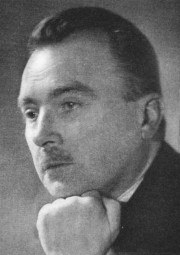 Wil men een geboortejaar voor de conservatieve revolutie in Nederland vaststellen, dan kan men niet anders dan het jaar 1921 noemen, waarin twee grote persoonlijkheden op de voorgrond traden: Prof. Bolland en Emile Verviers (foto). Verviers wendde zich in 1921 met een open brief tot H.M. de Koningin, waarin o.a. werd aangedrongen op de vorming van een nationaal kabinet. De sympathiebetuigingen, die hij naar aanleiding van deze open brief uit het gehele·land ontving, waren voor Dr. Verviers aanleiding om over te gaan tot de oprichting van het tijdschrift “Katholieke Staatkunde”, later veranderd in “Opbouwende Staatkunde”, waarin hij gelegenheid vond zijn ideëen nader uiteen te zetten. Tot het einde van het jaar 1924 is dit blad regelmatig verschenen; daarna werd de uitgave plotseling stopgezet. Van zijn hand verscheen o.a. een studie over “De kentering in het materialistisch denken” (Oisterwijk 1927). Dr. Verviers doceerde economische politiek aan de Universiteit te Leiden. Hoewel het “Genootschap voor Opbouwende Staatkunde”, waarin o.m. priester Wouter Lutkie een belangrijke rol vervulde, formeel bleef voortbestaan, gold het tijdschrift Opbouwende Staatkunde als te zijn opgenomen in het orgaan van het Verbond voor, Actualisten, De Vaderlander, dat in de zomer van 1924 verscheen. De ware reden voor de opheffing van het tijdschrift en de daaraan voorafgegane naamsverandering, was de zware druk, die van de zijde van de kerkelijke overheid op Dr. Verviers werd uitgeoefend. Eerst tien jaar later verscheen hij weer in de openbaarheid, nu als hoofdredacteur van het maandblad Nieuw Nederland, dat zich aankondigde als een onafhankelijk orgaan ter bestudering en bevordering van de nieuwe gedachte. Daaraan werd toegevoegd dat de Nationaal Socialistische Beweging in Nederland met belangstelling kennis nam van de vrije uitingen der medewerkers, om zich op den duur het beste daaruit tot het hare te maken. Dr. Verviers open de het eerste nummer (Juni 1934) met een artikel. getiteld “Orde”, eindigend met de woorden: “Laten wij, nu alles onder onze voeten wegzinkt, elkaar in de aangegeven geest eendrachtig de hand reiken tot nationale wederopstanding van ons volk. En er groeie een herboren, een Nieuw Nederland, uit de wijsheid en het sterk geloof van onze mannen, uit de toewijding en de liefde van onze vrouwen, uit de moed en de fierheid van onze jongelingschap, uit de schone en scheppende hope van onze jonge meisjes. Hou Zee!” In de loop van de tweede jaargang (1935) trad hij – andermaal als gevolg van de druk, die op hem uitgeoefend werd – als hoofdredacteur af; otn door Dr. R. van Genechten en E. J. Roskam te worden opgevolgd. Dr. Verviers trad daarna niet meer op de voorgrond.
Wil men een geboortejaar voor de conservatieve revolutie in Nederland vaststellen, dan kan men niet anders dan het jaar 1921 noemen, waarin twee grote persoonlijkheden op de voorgrond traden: Prof. Bolland en Emile Verviers (foto). Verviers wendde zich in 1921 met een open brief tot H.M. de Koningin, waarin o.a. werd aangedrongen op de vorming van een nationaal kabinet. De sympathiebetuigingen, die hij naar aanleiding van deze open brief uit het gehele·land ontving, waren voor Dr. Verviers aanleiding om over te gaan tot de oprichting van het tijdschrift “Katholieke Staatkunde”, later veranderd in “Opbouwende Staatkunde”, waarin hij gelegenheid vond zijn ideëen nader uiteen te zetten. Tot het einde van het jaar 1924 is dit blad regelmatig verschenen; daarna werd de uitgave plotseling stopgezet. Van zijn hand verscheen o.a. een studie over “De kentering in het materialistisch denken” (Oisterwijk 1927). Dr. Verviers doceerde economische politiek aan de Universiteit te Leiden. Hoewel het “Genootschap voor Opbouwende Staatkunde”, waarin o.m. priester Wouter Lutkie een belangrijke rol vervulde, formeel bleef voortbestaan, gold het tijdschrift Opbouwende Staatkunde als te zijn opgenomen in het orgaan van het Verbond voor, Actualisten, De Vaderlander, dat in de zomer van 1924 verscheen. De ware reden voor de opheffing van het tijdschrift en de daaraan voorafgegane naamsverandering, was de zware druk, die van de zijde van de kerkelijke overheid op Dr. Verviers werd uitgeoefend. Eerst tien jaar later verscheen hij weer in de openbaarheid, nu als hoofdredacteur van het maandblad Nieuw Nederland, dat zich aankondigde als een onafhankelijk orgaan ter bestudering en bevordering van de nieuwe gedachte. Daaraan werd toegevoegd dat de Nationaal Socialistische Beweging in Nederland met belangstelling kennis nam van de vrije uitingen der medewerkers, om zich op den duur het beste daaruit tot het hare te maken. Dr. Verviers open de het eerste nummer (Juni 1934) met een artikel. getiteld “Orde”, eindigend met de woorden: “Laten wij, nu alles onder onze voeten wegzinkt, elkaar in de aangegeven geest eendrachtig de hand reiken tot nationale wederopstanding van ons volk. En er groeie een herboren, een Nieuw Nederland, uit de wijsheid en het sterk geloof van onze mannen, uit de toewijding en de liefde van onze vrouwen, uit de moed en de fierheid van onze jongelingschap, uit de schone en scheppende hope van onze jonge meisjes. Hou Zee!” In de loop van de tweede jaargang (1935) trad hij – andermaal als gevolg van de druk, die op hem uitgeoefend werd – als hoofdredacteur af; otn door Dr. R. van Genechten en E. J. Roskam te worden opgevolgd. Dr. Verviers trad daarna niet meer op de voorgrond.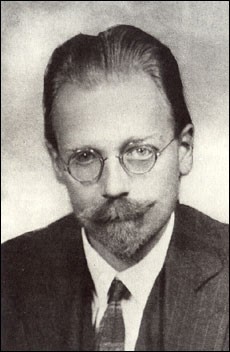 Zijn brochures (o.a. “Lenin stinkt” en “Hieronymus de Momper”) waren revolutionair van stijl; hij schreef niet alleen een pamflet tegen het Belgische verdrag, maar joeg ook met een pistool in de hand – geassisteerd door een veldwachter met getrokken sabel – een groep Belgische demonstranten in zeeuws-Vlaanderen op de vlucht. Zijn geschriften en zijn actief optreden, o.a. op de verjaardag van Prinses Juliana, toen Wichman de VARA-microfoon stuksloeg, waarvoor Teun de Klepperman een schimprede zou houden, en als gevolg daarvan een vechtpartij met de socialist Meyer Sluizer, waarbij hij een paar gebroken ribben opliep, bezorgden Wichman een grote populariteit . Hij was ook de eerste die een bezem als symbool gebruikte, een voorbeeld dat druk navolging gevonden heeft. De vele kunstenaars onder zijn volgelingen – ook Wichman zelf was schilder – kregen bij de acties van “De Anderen”, zoals Wichman en de zijnen zich veelal noemden, gelegenheid genoeg hun artistieke neigingen bot te vieren: straten en muren en verkiezingsborden van tegenstanders werden met de meest pakkende leuzen voorzien.
Zijn brochures (o.a. “Lenin stinkt” en “Hieronymus de Momper”) waren revolutionair van stijl; hij schreef niet alleen een pamflet tegen het Belgische verdrag, maar joeg ook met een pistool in de hand – geassisteerd door een veldwachter met getrokken sabel – een groep Belgische demonstranten in zeeuws-Vlaanderen op de vlucht. Zijn geschriften en zijn actief optreden, o.a. op de verjaardag van Prinses Juliana, toen Wichman de VARA-microfoon stuksloeg, waarvoor Teun de Klepperman een schimprede zou houden, en als gevolg daarvan een vechtpartij met de socialist Meyer Sluizer, waarbij hij een paar gebroken ribben opliep, bezorgden Wichman een grote populariteit . Hij was ook de eerste die een bezem als symbool gebruikte, een voorbeeld dat druk navolging gevonden heeft. De vele kunstenaars onder zijn volgelingen – ook Wichman zelf was schilder – kregen bij de acties van “De Anderen”, zoals Wichman en de zijnen zich veelal noemden, gelegenheid genoeg hun artistieke neigingen bot te vieren: straten en muren en verkiezingsborden van tegenstanders werden met de meest pakkende leuzen voorzien.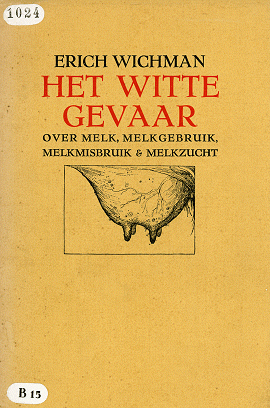 In Mei 1924 herleefde de activiteit van de groep Opbouwende Staatkunde onder een nieuw bestuur. Spreekbuis van deze groep was het vanaf April 1925 verschijnende maandblad Politiek Herstel. “tijdschrift uitgegeven door een groep Katholieken ter bevordering der anti-democratische herstel-gedachte”. In het eerste nummer citeert de redactie, bestaande uit Mr. Jos. Gillissen, J. J. M. Haslinghuis, Mr. L. van Heyst, Mr. O. Baron van Howell tot Westerflier en P. de Kuyper, baar uitspraak van 1924: “Wij zouden in dit inleidingswoord niet volledig zijn, wanneer we niet wezen op de lichtpunten voor de toekomst. Ten eerste is sinds de oprichting van het tijdschrift (Opbouwende Staatkunde) reeds een belangrijk deel van het gestelde doel (een nationale. anti- democratische, ommekeer in de geesten) verwezenlijkt. We willen niet zeggen dat dit uiterlijk, formeel, door de officieële organen en personen erkend wordt, maar toch, voor degeen die wat dieper schouwt achter de schijn der dingen en der personen, zijn er talrijke onbedriegelijke tekenen in ons nationale leven, die wijzen op een (zij ‘t grotendeels halfbewuste) evolutie in onze richting. Het zaad door Verviers en Lutkie uitgestrooid, beeft wortel geschoten.” En de redactie kon daar nu aan toevoegen, dat deze ontwikkeling sindsdien nog duidelijker aan het daglicht getreden was. Duidelijk werd de hier gepropageerde Nederlandse Herstel-beweging geplaatst in het kader van een reeds lang groeiende, diep gefundeerde Europese cultuurstroming.
In Mei 1924 herleefde de activiteit van de groep Opbouwende Staatkunde onder een nieuw bestuur. Spreekbuis van deze groep was het vanaf April 1925 verschijnende maandblad Politiek Herstel. “tijdschrift uitgegeven door een groep Katholieken ter bevordering der anti-democratische herstel-gedachte”. In het eerste nummer citeert de redactie, bestaande uit Mr. Jos. Gillissen, J. J. M. Haslinghuis, Mr. L. van Heyst, Mr. O. Baron van Howell tot Westerflier en P. de Kuyper, baar uitspraak van 1924: “Wij zouden in dit inleidingswoord niet volledig zijn, wanneer we niet wezen op de lichtpunten voor de toekomst. Ten eerste is sinds de oprichting van het tijdschrift (Opbouwende Staatkunde) reeds een belangrijk deel van het gestelde doel (een nationale. anti- democratische, ommekeer in de geesten) verwezenlijkt. We willen niet zeggen dat dit uiterlijk, formeel, door de officieële organen en personen erkend wordt, maar toch, voor degeen die wat dieper schouwt achter de schijn der dingen en der personen, zijn er talrijke onbedriegelijke tekenen in ons nationale leven, die wijzen op een (zij ‘t grotendeels halfbewuste) evolutie in onze richting. Het zaad door Verviers en Lutkie uitgestrooid, beeft wortel geschoten.” En de redactie kon daar nu aan toevoegen, dat deze ontwikkeling sindsdien nog duidelijker aan het daglicht getreden was. Duidelijk werd de hier gepropageerde Nederlandse Herstel-beweging geplaatst in het kader van een reeds lang groeiende, diep gefundeerde Europese cultuurstroming.




 del.icio.us
del.icio.us
 Digg
Digg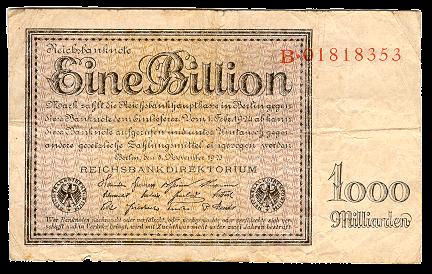
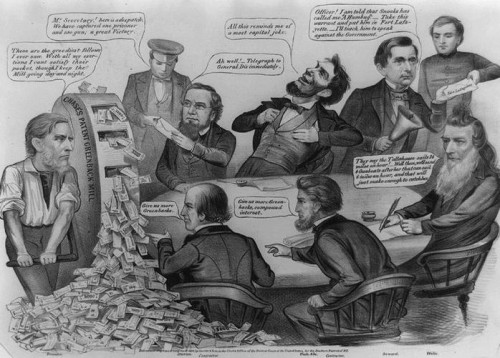
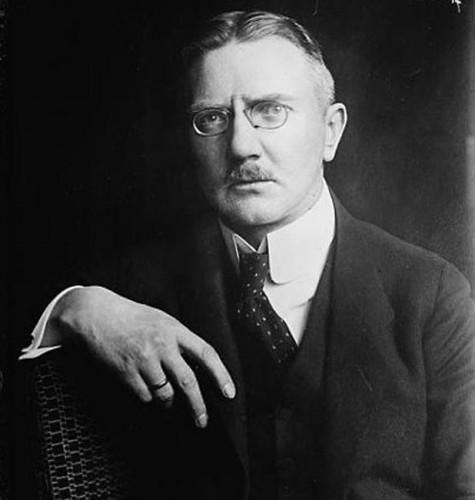
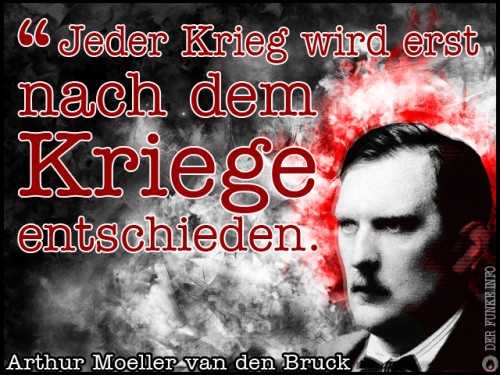
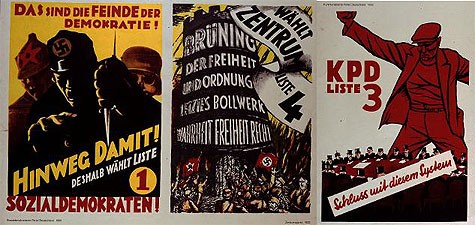
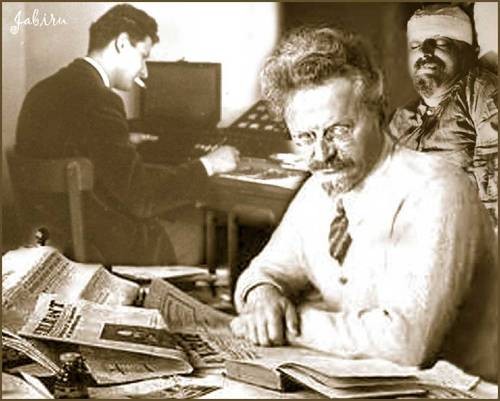
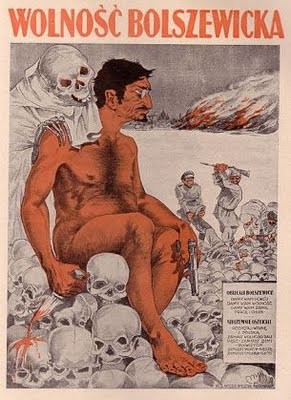 Il perçoit dans l’Eglise un ensemble de rites et de techniques dont on ferait bien de s’inspirer. C’est ce que font les gens du showbiz comme Coppola (les Baptêmes), les grandes messes ou bien sûr Madonna. Comme le rappelle Whoopi Goldberg dans Sister Act, les gens préfèrent aller à Las Vegas et payer que se rendre à la messe pour écouter gratis du chant sacré. The show is better ! Se voulant réaliste, Trotski ajoute :
Il perçoit dans l’Eglise un ensemble de rites et de techniques dont on ferait bien de s’inspirer. C’est ce que font les gens du showbiz comme Coppola (les Baptêmes), les grandes messes ou bien sûr Madonna. Comme le rappelle Whoopi Goldberg dans Sister Act, les gens préfèrent aller à Las Vegas et payer que se rendre à la messe pour écouter gratis du chant sacré. The show is better ! Se voulant réaliste, Trotski ajoute :
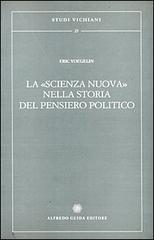










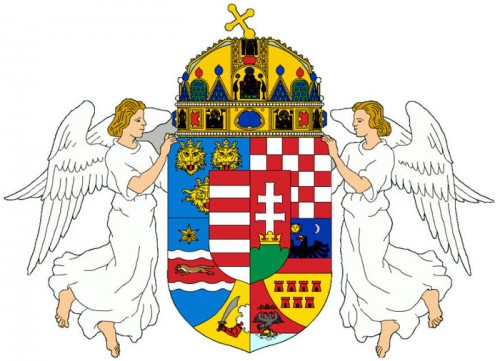
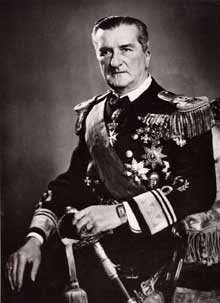 “Il est vrai que je n’ai jamais pensé à une dynastie Horthy et je ne peux que déplorer le fait que certains cercles, en Hongrie, affirment qu’une telle pensée aurait pu exister”. Telles sont les paroles qu’a couchées sur le papier le régent du royaume Miklos Horthy dans ses mémoires, où il exprime son point de vue sur l’éventuelle fondation d’une dynastie. Les faits sont pourtant différents. Très tôt, le régent a cultivé l’idée d’assurer dans le futur le pouvoir aux siens, et surtout à son fils Istvan qu’il adulait. Son épouse Magdolna, très ambitieuse, et la camarilla qui l’entourait confortaient le régent dans ses intentions.
“Il est vrai que je n’ai jamais pensé à une dynastie Horthy et je ne peux que déplorer le fait que certains cercles, en Hongrie, affirment qu’une telle pensée aurait pu exister”. Telles sont les paroles qu’a couchées sur le papier le régent du royaume Miklos Horthy dans ses mémoires, où il exprime son point de vue sur l’éventuelle fondation d’une dynastie. Les faits sont pourtant différents. Très tôt, le régent a cultivé l’idée d’assurer dans le futur le pouvoir aux siens, et surtout à son fils Istvan qu’il adulait. Son épouse Magdolna, très ambitieuse, et la camarilla qui l’entourait confortaient le régent dans ses intentions. 

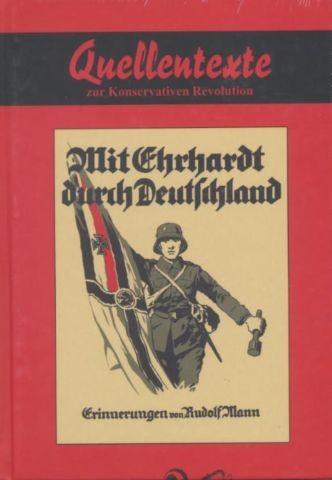 Au début du mois de mars 1920, Ehrhardt entre en rébellion contre l’ordre de dissolution et rejoint le putsch dit de Kapp, mené par un haut fonctionnaire prussien, Wolfgang Kapp, et par un général d’infanterie, Walther von Lüttwitz. La mission de la Brigade Ehrhardt était d’occuper le quartier gouvernemental de la capitale. Au cours de ce putsch, Ehrhardt a fait savoir ce qu’il entendait par “application de la violence” en cas de coup d’Etat: après que les fonctionnaires berlinois aient refusé de travailler pour le gouvernement putschiste, Ehrhardt aurait dit: “Eh bien, nous allons coller au mur les trois premiers fonctionnaires qui refusent de travailler. On verra bien alors si le reste va se mettre à travailler ou non”. Lorsque Kapp refusa d’appliquer cette mesure drastique, Ehrhardt a lâché ce commentaire: “Alors le putsch est fichu!”.
Au début du mois de mars 1920, Ehrhardt entre en rébellion contre l’ordre de dissolution et rejoint le putsch dit de Kapp, mené par un haut fonctionnaire prussien, Wolfgang Kapp, et par un général d’infanterie, Walther von Lüttwitz. La mission de la Brigade Ehrhardt était d’occuper le quartier gouvernemental de la capitale. Au cours de ce putsch, Ehrhardt a fait savoir ce qu’il entendait par “application de la violence” en cas de coup d’Etat: après que les fonctionnaires berlinois aient refusé de travailler pour le gouvernement putschiste, Ehrhardt aurait dit: “Eh bien, nous allons coller au mur les trois premiers fonctionnaires qui refusent de travailler. On verra bien alors si le reste va se mettre à travailler ou non”. Lorsque Kapp refusa d’appliquer cette mesure drastique, Ehrhardt a lâché ce commentaire: “Alors le putsch est fichu!”. Dès ce moment, les nationaux-socialistes considèreront Ehrhardt comme une personnalité peu fiable. Le Capitaine a perdu aussi beaucoup de son prestige dans les rangs des droites allemandes. En avril 1924, vu l’imminence d’un procès pénal, Hermann Ehrhardt quitte le Reich pour l’Autriche; il revient en octobre 1926 après une amnistie générale décrétée par le Président Paul von Hindenburg. En 1931, Ehrhardt fonde le groupe “Gefolgschaft” (littéralement: la “Suite”), qui, malgré la perte de prestige subie par Ehrhardt, parvient encore à rassembler plus de 2000 de ses adhérants, ainsi que des nationaux-socialistes et des communistes déçus. Ils voulaient empêcher Hitler de prendre le pouvoir et fustigeaient la “mauvaise politique de la NSDAP”. Ehrhardt entretenait des rapports avec Otto Strasser et l’aile socialiste de la NSDAP. En 1933, Ehrhardt s’installe sur les terres du Comte von Bredow à Klessen dans le Westhavelland. En juin 1934, quand Hitler élimine Röhm, Ehrhardt aurait normalement dû faire partie des victimes de la purge. Il a réussi à prendre la fuite à temps devant les SS venus pour l’abattre, en se réfugiant dans la forêt toute proche. Les sicaires ne l’ont que mollement poursuivi car, dit-on, beaucoup de membres de sa Brigade avaient rejoint les SS. Ehrhardt s’est d’abord réfugié en Suisse puis, en 1936, en Autriche, où son épouse, le Princesse Viktoria zu Hohenlohe-Öhringen possédait un château à Brunn im Walde dans le Waldviertel. Ehrhardt n’a plus fait autre chose que gérer ces terres, que participer à des chasses au gibier et que s’adonner à la sylviculture. Il s’est complètement retiré de la politique.
Dès ce moment, les nationaux-socialistes considèreront Ehrhardt comme une personnalité peu fiable. Le Capitaine a perdu aussi beaucoup de son prestige dans les rangs des droites allemandes. En avril 1924, vu l’imminence d’un procès pénal, Hermann Ehrhardt quitte le Reich pour l’Autriche; il revient en octobre 1926 après une amnistie générale décrétée par le Président Paul von Hindenburg. En 1931, Ehrhardt fonde le groupe “Gefolgschaft” (littéralement: la “Suite”), qui, malgré la perte de prestige subie par Ehrhardt, parvient encore à rassembler plus de 2000 de ses adhérants, ainsi que des nationaux-socialistes et des communistes déçus. Ils voulaient empêcher Hitler de prendre le pouvoir et fustigeaient la “mauvaise politique de la NSDAP”. Ehrhardt entretenait des rapports avec Otto Strasser et l’aile socialiste de la NSDAP. En 1933, Ehrhardt s’installe sur les terres du Comte von Bredow à Klessen dans le Westhavelland. En juin 1934, quand Hitler élimine Röhm, Ehrhardt aurait normalement dû faire partie des victimes de la purge. Il a réussi à prendre la fuite à temps devant les SS venus pour l’abattre, en se réfugiant dans la forêt toute proche. Les sicaires ne l’ont que mollement poursuivi car, dit-on, beaucoup de membres de sa Brigade avaient rejoint les SS. Ehrhardt s’est d’abord réfugié en Suisse puis, en 1936, en Autriche, où son épouse, le Princesse Viktoria zu Hohenlohe-Öhringen possédait un château à Brunn im Walde dans le Waldviertel. Ehrhardt n’a plus fait autre chose que gérer ces terres, que participer à des chasses au gibier et que s’adonner à la sylviculture. Il s’est complètement retiré de la politique.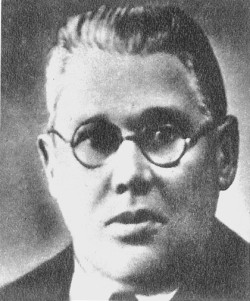 Lei è il massimo studioso mondiale del libero muratore Arturo Reghini (photo), Pagano e Pitagorico. Egli dimostrò l’origine italico-pitagorica della massoneria negando che la culla della medesima fosse cristiano-giudaica. Evidenziò anche la decadenza della Massoneria storpiata da innesti inaccettabili. Il Cristianesimo, tramite il peggior volto del Fascismo prostituitosi allo Stato pontificio, e la stessa massoneria hanno, a nostro parere, contrastato l’insigne maestro. Forse aveva ragione il massone Renè Guenon quando affermava che “Non è vero che la Massoneria è nata nel 1717: è morta.”?
Lei è il massimo studioso mondiale del libero muratore Arturo Reghini (photo), Pagano e Pitagorico. Egli dimostrò l’origine italico-pitagorica della massoneria negando che la culla della medesima fosse cristiano-giudaica. Evidenziò anche la decadenza della Massoneria storpiata da innesti inaccettabili. Il Cristianesimo, tramite il peggior volto del Fascismo prostituitosi allo Stato pontificio, e la stessa massoneria hanno, a nostro parere, contrastato l’insigne maestro. Forse aveva ragione il massone Renè Guenon quando affermava che “Non è vero che la Massoneria è nata nel 1717: è morta.”?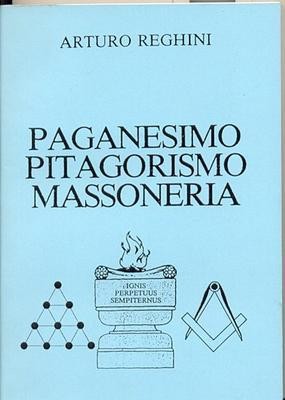 Quel che è avvenuto alla sapienza pagana negli anni della decadenza dell’impero romano è noto. Molti storici hanno documentato con ricchezza di informazioni gli orrori della religione asiatica. Recentemente è apparso anche un film molto bello su Ipazia che da solo dice molto. E’ inutile però rimpiangere il passato. La nostalgia serve a ben poco. Occorre confrontarsi con la realtà di oggi e definire uno stile di vita e di pensiero che renda possibile una rifioritura dell’albero piantato sulle nostre radici sepolte, un rinascimento vero.
Quel che è avvenuto alla sapienza pagana negli anni della decadenza dell’impero romano è noto. Molti storici hanno documentato con ricchezza di informazioni gli orrori della religione asiatica. Recentemente è apparso anche un film molto bello su Ipazia che da solo dice molto. E’ inutile però rimpiangere il passato. La nostalgia serve a ben poco. Occorre confrontarsi con la realtà di oggi e definire uno stile di vita e di pensiero che renda possibile una rifioritura dell’albero piantato sulle nostre radici sepolte, un rinascimento vero.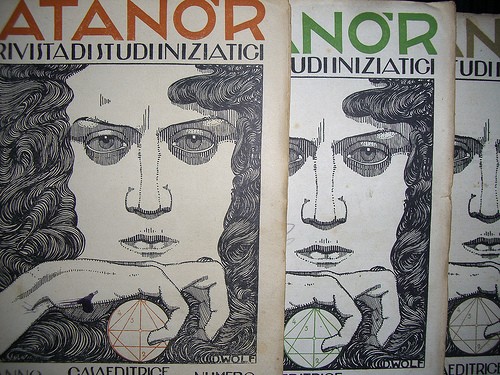
 Otto Strasser nasce il 10 settembre 1897 in una famiglia di funzionari bavaresi. Suo fratello Gregor (che sarà uno dei capi del partito nazista ed un serio concorrente di Hitler) è maggiore di cinque anni. L’uno e l’altro beneficiano di solidi antecedenti familiari: il padre Peter, che si interessa di economia politica e di storia, pubblica sotto lo pseudonimo di Paaul Weger un opuscolo intitolato Das neue Wesen, nel quale si pronuncia per un socialismo cristiano e sociale. Secondo Paul Strasser, fratello di Gregor e Otto, “in questo opuscolo si trova già abbozzato l’insieme del programma culturale e politico di Gregor e Otto, cioè un socialismo cristiano sociale, che è indicato come la soluzione alle contraddizioni e alle mancanze nate dalla malattia liberale, capitalista e internazionale dei nostri tempi.” Quando scoppia la Grande Guerra, Otto Strasser interrompe i suoi studi di diritto e di economia per arruolarsi il 2 agosto 1914 (è il più giovane volontario di Baviera). Il suo brillante comportamento al fronte gli varrà la Croce di Ferro di prima classe e la proposta per l’ Ordine Militare di Max-Joseph. Prima della smobilitazione nell’aprile/maggio 1919, partecipa con il fratello Gregor, nel Corpo Franco von Epp, all’assalto contro la Repubblica sovietica di Baviera. Ritornato alla vita civile Otto riprende i suoi studi a Berlino nel 1919 e fonda la “Associazione universitaria dei veterani socialdemocratici”.
Otto Strasser nasce il 10 settembre 1897 in una famiglia di funzionari bavaresi. Suo fratello Gregor (che sarà uno dei capi del partito nazista ed un serio concorrente di Hitler) è maggiore di cinque anni. L’uno e l’altro beneficiano di solidi antecedenti familiari: il padre Peter, che si interessa di economia politica e di storia, pubblica sotto lo pseudonimo di Paaul Weger un opuscolo intitolato Das neue Wesen, nel quale si pronuncia per un socialismo cristiano e sociale. Secondo Paul Strasser, fratello di Gregor e Otto, “in questo opuscolo si trova già abbozzato l’insieme del programma culturale e politico di Gregor e Otto, cioè un socialismo cristiano sociale, che è indicato come la soluzione alle contraddizioni e alle mancanze nate dalla malattia liberale, capitalista e internazionale dei nostri tempi.” Quando scoppia la Grande Guerra, Otto Strasser interrompe i suoi studi di diritto e di economia per arruolarsi il 2 agosto 1914 (è il più giovane volontario di Baviera). Il suo brillante comportamento al fronte gli varrà la Croce di Ferro di prima classe e la proposta per l’ Ordine Militare di Max-Joseph. Prima della smobilitazione nell’aprile/maggio 1919, partecipa con il fratello Gregor, nel Corpo Franco von Epp, all’assalto contro la Repubblica sovietica di Baviera. Ritornato alla vita civile Otto riprende i suoi studi a Berlino nel 1919 e fonda la “Associazione universitaria dei veterani socialdemocratici”.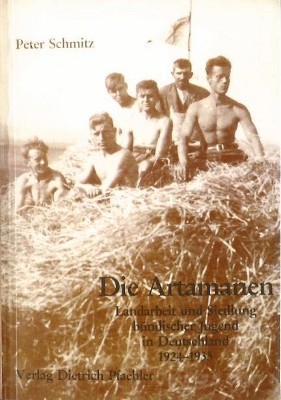 Wer träumt nicht davon, wieder Herr auf eigener Scholle zu sein und anstelle eines „jobs“ in der Dienstleistungsgesellschaft seiner Berufung nach einem ehrlichen Handwerk nachzugehen? Auch das Bewußtsein, sich nicht nur gesund ernähren, sondern selbst ernähren zu wollen, aus eigener Ernte, steigt. Wenn auch noch unmerklich, so schwindet doch die Identifikation lebensbewußter Menschen mit dem entwertenden Begriff Verbraucher. Alle sind heute nur noch Verbraucher, Verbraucher zunehmend nebulös produzierter Erzeugnisse. Lebensmittel sind zum anonymen Verbrauchsgut anonymer Verbraucher verkommen, denn es ist schwer geworden zu beurteilen, was wir essen und woher es kommt. Die Unkontrollierbarkeit des globalen Warenverschleppungssystems wird immer Lebensmittelskandale provozieren, insofern sie überhaupt öffentlich werden. Für diejenigen, die dies als befremdend und als eine nicht unumstößliche Gegebenheit empfinden, ist der eigene Garten je nach Größe längst zu einer partiellen Alternative geworden. Wer dort nicht stehen bleiben will, lebt in Hofgemeinschaften in der Landwirtschaft. Dafür müssen diese Stätten aber ein Hort der Arbeit und nicht nur der gemeinsamen Freizeitgestaltung sein. Auf der Grundlage der gestaltgebenden und schöpferischen Kraft einer gemeinsamen Weltanschauung wären Gemeinschaften möglich, die es auch und gerade im Heute zu einer alternativen Lebensführung und Lebensform schaffen können, deren Leistungen über die eigene Versorgung mit Lebensmitteln hinausgehen. Es geht um den Gedanken der Siedlung.
Wer träumt nicht davon, wieder Herr auf eigener Scholle zu sein und anstelle eines „jobs“ in der Dienstleistungsgesellschaft seiner Berufung nach einem ehrlichen Handwerk nachzugehen? Auch das Bewußtsein, sich nicht nur gesund ernähren, sondern selbst ernähren zu wollen, aus eigener Ernte, steigt. Wenn auch noch unmerklich, so schwindet doch die Identifikation lebensbewußter Menschen mit dem entwertenden Begriff Verbraucher. Alle sind heute nur noch Verbraucher, Verbraucher zunehmend nebulös produzierter Erzeugnisse. Lebensmittel sind zum anonymen Verbrauchsgut anonymer Verbraucher verkommen, denn es ist schwer geworden zu beurteilen, was wir essen und woher es kommt. Die Unkontrollierbarkeit des globalen Warenverschleppungssystems wird immer Lebensmittelskandale provozieren, insofern sie überhaupt öffentlich werden. Für diejenigen, die dies als befremdend und als eine nicht unumstößliche Gegebenheit empfinden, ist der eigene Garten je nach Größe längst zu einer partiellen Alternative geworden. Wer dort nicht stehen bleiben will, lebt in Hofgemeinschaften in der Landwirtschaft. Dafür müssen diese Stätten aber ein Hort der Arbeit und nicht nur der gemeinsamen Freizeitgestaltung sein. Auf der Grundlage der gestaltgebenden und schöpferischen Kraft einer gemeinsamen Weltanschauung wären Gemeinschaften möglich, die es auch und gerade im Heute zu einer alternativen Lebensführung und Lebensform schaffen können, deren Leistungen über die eigene Versorgung mit Lebensmitteln hinausgehen. Es geht um den Gedanken der Siedlung.
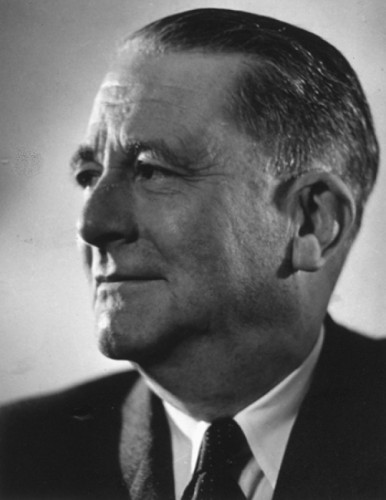
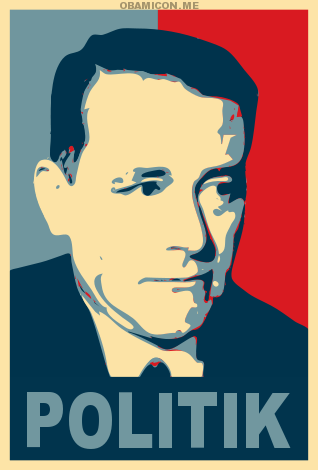 Since 1945 Western nations have witnessed a dramatic reduction in the variety of positions in political theory and jurisprudence. Political argument has been virtually reduced to contests within liberal-democratic theory. Even radicals now take representative democracy as their unquestioned point of departure. There are, of course, some benefits following from this restriction of political debate. Fascist, Nazi and Stalinist political ideologies are now beyond the pale. But the hegemony of liberal-democratic political agreement tends to obscure the fact that we are thinking in terms which were already obsolete at the end of the nineteenth century.
Since 1945 Western nations have witnessed a dramatic reduction in the variety of positions in political theory and jurisprudence. Political argument has been virtually reduced to contests within liberal-democratic theory. Even radicals now take representative democracy as their unquestioned point of departure. There are, of course, some benefits following from this restriction of political debate. Fascist, Nazi and Stalinist political ideologies are now beyond the pale. But the hegemony of liberal-democratic political agreement tends to obscure the fact that we are thinking in terms which were already obsolete at the end of the nineteenth century.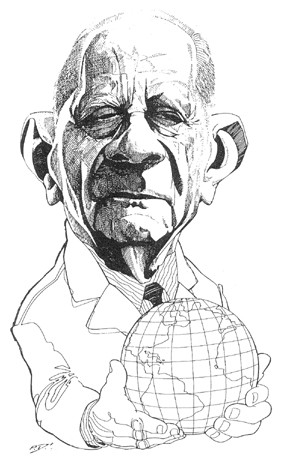
 In the heady days immediately after the Bolshevik Revolution in Russia, it was widely believed that proletarian revolution would momentarily sweep out of the Urals into Europe and, ultimately, North America. It did not; the only two attempts at workers' government in the West— in Munich and Budapest—lasted only months. The Communist International (Comintern) therefore began several operations to determine why this was so. One such was headed by Georg Lukacs, a Hungarian aristocrat, son of one of the Hapsburg Empire's leading bankers. Trained in Germany and already an important literary theorist, Lukacs became a Communist during World War I, writing as he joined the party, "Who will save us from Western civilization?" Lukacs was well-suited to the Comintern task: he had been one of the Commissars of Culture during the short-lived Hungarian Soviet in Budapest in 1919; in fact, modern historians link the shortness of the Budapest experiment to Lukacs' orders mandating sex education in the schools, easy access to contraception, and the loosening of divorce laws—all of which revulsed Hungary's Roman Catholic population.
In the heady days immediately after the Bolshevik Revolution in Russia, it was widely believed that proletarian revolution would momentarily sweep out of the Urals into Europe and, ultimately, North America. It did not; the only two attempts at workers' government in the West— in Munich and Budapest—lasted only months. The Communist International (Comintern) therefore began several operations to determine why this was so. One such was headed by Georg Lukacs, a Hungarian aristocrat, son of one of the Hapsburg Empire's leading bankers. Trained in Germany and already an important literary theorist, Lukacs became a Communist during World War I, writing as he joined the party, "Who will save us from Western civilization?" Lukacs was well-suited to the Comintern task: he had been one of the Commissars of Culture during the short-lived Hungarian Soviet in Budapest in 1919; in fact, modern historians link the shortness of the Budapest experiment to Lukacs' orders mandating sex education in the schools, easy access to contraception, and the loosening of divorce laws—all of which revulsed Hungary's Roman Catholic population. Lukacs survived to briefly take up his old post as Minister of Culture during the anti-Stalinist Imre Nagy regime in Hungary. Of the other top Institute figures, the political perambulations of Herbert Marcuse are typical. He started as a Communist; became a protégé of philosopher Martin Heidegger even as the latter was joining the Nazi Party; coming to America, he worked for the World War II Office of Strategic Services (OSS), and later became the U.S. State Department's top analyst of Soviet policy during the height of the McCarthy period; in the 1960's, he turned again, to become the most important guru of the New Left; and he ended his days helping to found the environmentalist extremist Green Party in West Germany.
Lukacs survived to briefly take up his old post as Minister of Culture during the anti-Stalinist Imre Nagy regime in Hungary. Of the other top Institute figures, the political perambulations of Herbert Marcuse are typical. He started as a Communist; became a protégé of philosopher Martin Heidegger even as the latter was joining the Nazi Party; coming to America, he worked for the World War II Office of Strategic Services (OSS), and later became the U.S. State Department's top analyst of Soviet policy during the height of the McCarthy period; in the 1960's, he turned again, to become the most important guru of the New Left; and he ended his days helping to found the environmentalist extremist Green Party in West Germany. Perhaps the most important, if least-known, of the Frankfurt School's successes was the shaping of the electronic media of radio and television into the powerful instruments of social control which they represent today. This grew out of the work originally done by two men who came to the Institute in the late 1920's, Theodor Adorno and Walter Benjamin.
Perhaps the most important, if least-known, of the Frankfurt School's successes was the shaping of the electronic media of radio and television into the powerful instruments of social control which they represent today. This grew out of the work originally done by two men who came to the Institute in the late 1920's, Theodor Adorno and Walter Benjamin. From 1928 to 1932, Adorno and Benjamin had an intensive collaboration, at the end of which they began publishing articles in the Institute's journal, the Zeitschrift fär Sozialforschung. Benjamin was kept on the margins of the Institute, largely due to Adorno, who would later appropriate much of his work. As Hitler came to power, the Institute's staff fled, but, whereas most were quickly spirited away to new deployments in the U.S. and England, there were no job offers for Benjamin, probably due to the animus of Adorno. He went to France, and, after the German invasion, fled to the Spanish border; expecting momentary arrest by the Gestapo, he despaired and died in a dingy hotel room of self-administered drug overdose.
From 1928 to 1932, Adorno and Benjamin had an intensive collaboration, at the end of which they began publishing articles in the Institute's journal, the Zeitschrift fär Sozialforschung. Benjamin was kept on the margins of the Institute, largely due to Adorno, who would later appropriate much of his work. As Hitler came to power, the Institute's staff fled, but, whereas most were quickly spirited away to new deployments in the U.S. and England, there were no job offers for Benjamin, probably due to the animus of Adorno. He went to France, and, after the German invasion, fled to the Spanish border; expecting momentary arrest by the Gestapo, he despaired and died in a dingy hotel room of self-administered drug overdose. Adorno was younger than Benjamin, and as aggressive as the older man was passive. Born Teodoro Wiesengrund-Adorno to a Corsican family, he was taught the piano at an early age by an aunt who lived with the family and had been the concert accompanist to the international opera star Adelina Patti. It was generally thought that Theodor would become a professional musician, and he studied with Bernard Sekles, Paul Hindemith's teacher. However, in 1918, while still a gymnasium student, Adorno met Siegfried Kracauer. Kracauer was part of a Kantian-Zionist salon which met at the house of Rabbi Nehemiah Nobel in Frankfurt; other members of the Nobel circle included philosopher Martin Buber, writer Franz Rosenzweig, and two students, Leo Lowenthal and Erich Fromm. Kracauer, Lowenthal, and Fromm would join the I.S.R. two decades later. Adorno engaged Kracauer to tutor him in the philosophy of Kant; Kracauer also introduced him to the writings of Lukacs and to Walter Benjamin, who was around the Nobel clique.
Adorno was younger than Benjamin, and as aggressive as the older man was passive. Born Teodoro Wiesengrund-Adorno to a Corsican family, he was taught the piano at an early age by an aunt who lived with the family and had been the concert accompanist to the international opera star Adelina Patti. It was generally thought that Theodor would become a professional musician, and he studied with Bernard Sekles, Paul Hindemith's teacher. However, in 1918, while still a gymnasium student, Adorno met Siegfried Kracauer. Kracauer was part of a Kantian-Zionist salon which met at the house of Rabbi Nehemiah Nobel in Frankfurt; other members of the Nobel circle included philosopher Martin Buber, writer Franz Rosenzweig, and two students, Leo Lowenthal and Erich Fromm. Kracauer, Lowenthal, and Fromm would join the I.S.R. two decades later. Adorno engaged Kracauer to tutor him in the philosophy of Kant; Kracauer also introduced him to the writings of Lukacs and to Walter Benjamin, who was around the Nobel clique. In 1924, Adorno moved to Vienna, to study with the atonalist composers Alban Berg and Arnold Schönberg, and became connected to the avant-garde and occult circle around the old Marxist Karl Kraus. Here, he not only met his future collaborator, Hans Eisler, but also came into contact with the theories of Freudian extremist Otto Gross. Gross, a long-time cocaine addict, had died in a Berlin gutter in 1920, while on his way to help the revolution in Budapest; he had developed the theory that mental health could only be achieved through the revival of the ancient cult of Astarte, which would sweep away monotheism and the "bourgeois family."
In 1924, Adorno moved to Vienna, to study with the atonalist composers Alban Berg and Arnold Schönberg, and became connected to the avant-garde and occult circle around the old Marxist Karl Kraus. Here, he not only met his future collaborator, Hans Eisler, but also came into contact with the theories of Freudian extremist Otto Gross. Gross, a long-time cocaine addict, had died in a Berlin gutter in 1920, while on his way to help the revolution in Budapest; he had developed the theory that mental health could only be achieved through the revival of the ancient cult of Astarte, which would sweep away monotheism and the "bourgeois family." The Adorno-Benjamin analysis represents almost the entire theoretical basis of all the politically correct aesthetic trends which now plague our universities. The Poststructuralism of Roland Barthes, Michel Foucault, and Jacques Derrida, the Semiotics of Umberto Eco, the Deconstructionism of Paul DeMan, all openly cite Benjamin as the source of their work. The Italian terrorist Eco's best-selling novel, The Name of the Rose, is little more than a paean to Benjamin; DeMan, the former Nazi collaborator in Belgium who became a prestigious Yale professor, began his career translating Benjamin; Barthes' infamous 1968 statement that "[t]he author is dead," is meant as an elaboration of Benjamin's dictum on intention. Benjamin has actually been called the heir of Leibniz and of Wilhelm von Humboldt, the philologist collaborator of Schiller whose educational reforms engendered the tremendous development of Germany in the nineteenth century. Even as recently as September 1991, the Washington Post referred to Benjamin as "the finest German literary theorist of the century (and many would have left off that qualifying German)."
The Adorno-Benjamin analysis represents almost the entire theoretical basis of all the politically correct aesthetic trends which now plague our universities. The Poststructuralism of Roland Barthes, Michel Foucault, and Jacques Derrida, the Semiotics of Umberto Eco, the Deconstructionism of Paul DeMan, all openly cite Benjamin as the source of their work. The Italian terrorist Eco's best-selling novel, The Name of the Rose, is little more than a paean to Benjamin; DeMan, the former Nazi collaborator in Belgium who became a prestigious Yale professor, began his career translating Benjamin; Barthes' infamous 1968 statement that "[t]he author is dead," is meant as an elaboration of Benjamin's dictum on intention. Benjamin has actually been called the heir of Leibniz and of Wilhelm von Humboldt, the philologist collaborator of Schiller whose educational reforms engendered the tremendous development of Germany in the nineteenth century. Even as recently as September 1991, the Washington Post referred to Benjamin as "the finest German literary theorist of the century (and many would have left off that qualifying German)." The director of the Project was Paul Lazersfeld, the foster son of Austrian Marxist economist Rudolph Hilferding, and a long-time collaborator of the I.S.R. from the early 1930's. Under Lazersfeld was Frank Stanton, a recent Ph.D. in industrial psychology from Ohio State, who had just been made research director of Columbia Broadcasting System—a grand title but a lowly position. After World War II, Stanton became president of the CBS News Division, and ultimately president of CBS at the height of the TV network's power; he also became Chairman of the Board of the RAND Corporation, and a member of President Lyndon Johnson's "kitchen cabinet." Among the Project's researchers were Herta Herzog, who married Lazersfeld and became the first director of research for the Voice of America; and Hazel Gaudet, who became one of the nation's leading political pollsters. Theodor Adorno was named chief of the Project's music section.
The director of the Project was Paul Lazersfeld, the foster son of Austrian Marxist economist Rudolph Hilferding, and a long-time collaborator of the I.S.R. from the early 1930's. Under Lazersfeld was Frank Stanton, a recent Ph.D. in industrial psychology from Ohio State, who had just been made research director of Columbia Broadcasting System—a grand title but a lowly position. After World War II, Stanton became president of the CBS News Division, and ultimately president of CBS at the height of the TV network's power; he also became Chairman of the Board of the RAND Corporation, and a member of President Lyndon Johnson's "kitchen cabinet." Among the Project's researchers were Herta Herzog, who married Lazersfeld and became the first director of research for the Voice of America; and Hazel Gaudet, who became one of the nation's leading political pollsters. Theodor Adorno was named chief of the Project's music section. The first studies were promising. Herta Herzog produced "On Borrowed Experiences," the first comprehensive research on soap operas. The "serial radio drama" format was first used in 1929, on the inspiration of the old, cliff-hanger "Perils of Pauline" film serial. Because these little radio plays were highly melodramatic, they became popularly identified with Italian grand opera; because they were often sponsored by soap manufacturers, they ended up with the generic name, "soap opera."
The first studies were promising. Herta Herzog produced "On Borrowed Experiences," the first comprehensive research on soap operas. The "serial radio drama" format was first used in 1929, on the inspiration of the old, cliff-hanger "Perils of Pauline" film serial. Because these little radio plays were highly melodramatic, they became popularly identified with Italian grand opera; because they were often sponsored by soap manufacturers, they ended up with the generic name, "soap opera." These psychoanalytic survey techniques became standard, not only for the Frankfurt School, but also throughout American social science departments, particularly after the I.S.R. arrived in the United States. The methodology was the basis of the research piece for which the Frankfurt School is most well known, the "authoritarian personality" project. In 1942, I.S.R. director Max Horkheimer made contact with the American Jewish Committee, which asked him to set up a Department of Scientific Research within its organization. The American Jewish Committee also provided a large grant to study anti-Semitism in the American population. "Our aim," wrote Horkheimer in the introduction to the study, "is not merely to describe prejudice, but to explain it in order to help in its eradication.... Eradication means reeducation scientifically planned on the basis of understanding scientifically arrived at."
These psychoanalytic survey techniques became standard, not only for the Frankfurt School, but also throughout American social science departments, particularly after the I.S.R. arrived in the United States. The methodology was the basis of the research piece for which the Frankfurt School is most well known, the "authoritarian personality" project. In 1942, I.S.R. director Max Horkheimer made contact with the American Jewish Committee, which asked him to set up a Department of Scientific Research within its organization. The American Jewish Committee also provided a large grant to study anti-Semitism in the American population. "Our aim," wrote Horkheimer in the introduction to the study, "is not merely to describe prejudice, but to explain it in order to help in its eradication.... Eradication means reeducation scientifically planned on the basis of understanding scientifically arrived at." Ultimately, five volumes were produced for this study over the course of the late 1940's; the most important was the last, The Authoritarian Personality, by Adorno, with the help of three Berkeley, California social psychologists.
Ultimately, five volumes were produced for this study over the course of the late 1940's; the most important was the last, The Authoritarian Personality, by Adorno, with the help of three Berkeley, California social psychologists. This self-serving attempt to maximize paranoia was further aided by Hannah Arendt, who popularized the authoritarian personality research in her widely-read Origins of Totalitarianism. Arendt also added the famous rhetorical flourish about the "banality of evil" in her later Eichmann in Jerusalem: even a simple, shopkeeper-type like Eichmann can turn into a Nazi beast under the right psychological circumstances—every Gentile is suspect, psychoanalytically.
This self-serving attempt to maximize paranoia was further aided by Hannah Arendt, who popularized the authoritarian personality research in her widely-read Origins of Totalitarianism. Arendt also added the famous rhetorical flourish about the "banality of evil" in her later Eichmann in Jerusalem: even a simple, shopkeeper-type like Eichmann can turn into a Nazi beast under the right psychological circumstances—every Gentile is suspect, psychoanalytically. Part of the influence of the authoritarian personality hoax in our own day also derives from the fact that, incredibly, the Frankfurt School and its theories were officially accepted by the U.S. government during World War II, and these Cominternists were responsible for determining who were America's wartime, and postwar, enemies. In 1942, the Office of Strategic Services, America's hastily-constructed espionage and covert operations unit, asked former Harvard president James Baxter to form a Research and Analysis (R&A) Branch under the group's Intelligence Division. By 1944, the R&A Branch had collected such a large and prestigeous group of emigré scholars that H. Stuart Hughes, then a young Ph.D., said that working for it was "a second graduate education" at government expense. The Central European Section was headed by historian Carl Schorske; under him, in the all-important Germany/Austria Section, was Franz Neumann, as section chief, with Herbert Marcuse, Paul Baran, and Otto Kirchheimer, all I.S.R. veterans. Leo Lowenthal headed the German-language section of the Office of War Information; Sophie Marcuse, Marcuse's wife, worked at the Office of Naval Intelligence. Also at the R&A Branch were: Siegfried Kracauer, Adorno's old Kant instructor, now a film theorist; Norman O. Brown, who would become famous in the 1960's by combining Marcuse's hedonism theory with Wilhelm Reich's orgone therapy to popularize "polymorphous perversity"; Barrington Moore, Jr., later a philosophy professor who would co-author a book with Marcuse; Gregory Bateson, the husband of anthropologist Margaret Mead (who wrote for the Frankfurt School's journal), and Arthur Schlesinger, the historian who joined the Kennedy Administration. Marcuse's first assignment was to head a team to identify both those who would be tried as war criminals after the war, and also those who were potential leaders of postwar Germany. In 1944, Marcuse, Neumann, and Kirchheimer wrote the Denazification Guide, which was later issued to officers of the U.S. Armed Forces occupying Germany, to help them identify and suppress pro-Nazi behaviors. After the armistice, the R&A Branch sent representatives to work as intelligence liaisons with the various occupying powers; Marcuse was assigned the U.S. Zone, Kirchheimer the French, and Barrington Moore the Soviet. In the summer of 1945, Neumann left to become chief of research for the Nuremburg Tribunal. Marcuse remained in and around U.S. intelligence into the early 1950's, rising to the chief of the Central European Branch of the State Department's Office of Intelligence Research, an office formally charged with "planning and implementing a program of positive-intelligence research ... to meet the intelligence requirements of the Central Intelligence Agency and other authorized agencies." During his tenure as a U.S. government official, Marcuse supported the division of Germany into East and West, noting that this would prevent an alliance between the newly liberated left-wing parties and the old, conservative industrial and business layers. In 1949, he produced a 532-page report, "The Potentials of World Communism" (declassified only in 1978), which suggested that the Marshall Plan economic stabilization of Europe would limit the recruitment potential of Western Europe's Communist Parties to acceptable levels, causing a period of hostile co-existence with the Soviet Union, marked by confrontation only in faraway places like Latin America and Indochina—in all, a surprisingly accurate forecast. Marcuse left the State Department with a Rockefeller Foundation grant to work with the various Soviet Studies departments which were set up at many of America's top universities after the war, largely by R&A Branch veterans.
Part of the influence of the authoritarian personality hoax in our own day also derives from the fact that, incredibly, the Frankfurt School and its theories were officially accepted by the U.S. government during World War II, and these Cominternists were responsible for determining who were America's wartime, and postwar, enemies. In 1942, the Office of Strategic Services, America's hastily-constructed espionage and covert operations unit, asked former Harvard president James Baxter to form a Research and Analysis (R&A) Branch under the group's Intelligence Division. By 1944, the R&A Branch had collected such a large and prestigeous group of emigré scholars that H. Stuart Hughes, then a young Ph.D., said that working for it was "a second graduate education" at government expense. The Central European Section was headed by historian Carl Schorske; under him, in the all-important Germany/Austria Section, was Franz Neumann, as section chief, with Herbert Marcuse, Paul Baran, and Otto Kirchheimer, all I.S.R. veterans. Leo Lowenthal headed the German-language section of the Office of War Information; Sophie Marcuse, Marcuse's wife, worked at the Office of Naval Intelligence. Also at the R&A Branch were: Siegfried Kracauer, Adorno's old Kant instructor, now a film theorist; Norman O. Brown, who would become famous in the 1960's by combining Marcuse's hedonism theory with Wilhelm Reich's orgone therapy to popularize "polymorphous perversity"; Barrington Moore, Jr., later a philosophy professor who would co-author a book with Marcuse; Gregory Bateson, the husband of anthropologist Margaret Mead (who wrote for the Frankfurt School's journal), and Arthur Schlesinger, the historian who joined the Kennedy Administration. Marcuse's first assignment was to head a team to identify both those who would be tried as war criminals after the war, and also those who were potential leaders of postwar Germany. In 1944, Marcuse, Neumann, and Kirchheimer wrote the Denazification Guide, which was later issued to officers of the U.S. Armed Forces occupying Germany, to help them identify and suppress pro-Nazi behaviors. After the armistice, the R&A Branch sent representatives to work as intelligence liaisons with the various occupying powers; Marcuse was assigned the U.S. Zone, Kirchheimer the French, and Barrington Moore the Soviet. In the summer of 1945, Neumann left to become chief of research for the Nuremburg Tribunal. Marcuse remained in and around U.S. intelligence into the early 1950's, rising to the chief of the Central European Branch of the State Department's Office of Intelligence Research, an office formally charged with "planning and implementing a program of positive-intelligence research ... to meet the intelligence requirements of the Central Intelligence Agency and other authorized agencies." During his tenure as a U.S. government official, Marcuse supported the division of Germany into East and West, noting that this would prevent an alliance between the newly liberated left-wing parties and the old, conservative industrial and business layers. In 1949, he produced a 532-page report, "The Potentials of World Communism" (declassified only in 1978), which suggested that the Marshall Plan economic stabilization of Europe would limit the recruitment potential of Western Europe's Communist Parties to acceptable levels, causing a period of hostile co-existence with the Soviet Union, marked by confrontation only in faraway places like Latin America and Indochina—in all, a surprisingly accurate forecast. Marcuse left the State Department with a Rockefeller Foundation grant to work with the various Soviet Studies departments which were set up at many of America's top universities after the war, largely by R&A Branch veterans. At the same time, Max Horkheimer was doing even greater damage. As part of the denazification of Germany suggested by the R&A Branch, U.S. High Commissioner for Germany John J. McCloy, using personal discretionary funds, brought Horkheimer back to Germany to reform the German university system. In fact, McCloy asked President Truman and Congress to pass a bill granting Horkheimer, who had become a naturalized American, dual citizenship; thus, for a brief period, Horkheimer was the only person in the world to hold both German and U.S. citizenship. In Germany, Horkheimer began the spadework for the full-blown revival of the Frankfurt School in that nation in the late 1950's, including the training of a whole new generation of anti-Western civilization scholars like Hans-Georg Gadamer and Jürgen Habermas, who would have such destructive influence in 1960's Germany. In a period of American history when some individuals were being hounded into unemployment and suicide for the faintest aroma of leftism, Frankfurt School veterans—all with superb Comintern credentials — led what can only be called charmed lives. America had, to an incredible extent, handed the determination of who were the nation's enemies, over to the nation's own worst enemies.
At the same time, Max Horkheimer was doing even greater damage. As part of the denazification of Germany suggested by the R&A Branch, U.S. High Commissioner for Germany John J. McCloy, using personal discretionary funds, brought Horkheimer back to Germany to reform the German university system. In fact, McCloy asked President Truman and Congress to pass a bill granting Horkheimer, who had become a naturalized American, dual citizenship; thus, for a brief period, Horkheimer was the only person in the world to hold both German and U.S. citizenship. In Germany, Horkheimer began the spadework for the full-blown revival of the Frankfurt School in that nation in the late 1950's, including the training of a whole new generation of anti-Western civilization scholars like Hans-Georg Gadamer and Jürgen Habermas, who would have such destructive influence in 1960's Germany. In a period of American history when some individuals were being hounded into unemployment and suicide for the faintest aroma of leftism, Frankfurt School veterans—all with superb Comintern credentials — led what can only be called charmed lives. America had, to an incredible extent, handed the determination of who were the nation's enemies, over to the nation's own worst enemies. The simmering unrest on campus in 1960 might well too have passed or had a positive outcome, were it not for the traumatic decapitation of the nation through the Kennedy assassination, plus the simultaneous introduction of widespread drug use. Drugs had always been an "analytical tool" of the nineteenth century Romantics, like the French Symbolists, and were popular among the European and American Bohemian fringe well into the post-World War II period. But, in the second half of the 1950's, the CIA and allied intelligence services began extensive experimentation with the hallucinogen LSD to investigate its potential for social control. It has now been documented that millions of doses of the chemical were produced and disseminated under the aegis of the CIA's Operation MK-Ultra. LSD became the drug of choice within the agency itself, and was passed out freely to friends of the family, including a substantial number of OSS veterans. For instance, it was OSS Research and Analysis Branch veteran Gregory Bateson who "turned on" the Beat poet Allen Ginsberg to a U.S. Navy LSD experiment in Palo Alto, California. Not only Ginsberg, but novelist Ken Kesey and the original members of the Grateful Dead rock group opened the doors of perception courtesy of the Navy. The guru of the "psychedelic revolution," Timothy Leary, first heard about hallucinogens in 1957 from Life magazine (whose publisher, Henry Luce, was often given government acid, like many other opinion shapers), and began his career as a CIA contract employee; at a 1977 "reunion" of acid pioneers, Leary openly admitted, "everything I am, I owe to the foresight of the CIA." Hallucinogens have the singular effect of making the victim asocial, totally self-centered, and concerned with objects. Even the most banal objects take on the "aura" which Benjamin had talked about, and become timeless and delusionarily profound. In other words, hallucinogens instantaneously achieve a state of mind identical to that prescribed by the Frankfurt School theories. And, the popularization of these chemicals created a vast psychological lability for bringing those theories into practice. Thus, the situation at the beginning of the 1960's represented a brilliant re-entry point for the Frankfurt School, and it was fully exploited. One of the crowning ironies of the "Now Generation" of 1964 on, is that, for all its protestations of utter modernity, none of its ideas or artifacts was less than thirty years old. The political theory came completely from the Frankfurt School; Lucien Goldmann, a French radical who was a visiting professor at Columbia in 1968, was absolutely correct when he said of Herbert Marcuse in 1969 that "the student movements ... found in his works and ultimately in his works alone the theoretical formulation of their problems and aspirations [emphasis in original]." The long hair and sandals, the free love communes, the macrobiotic food, the liberated lifestyles, had been designed at the turn of the century, and thoroughly field-tested by various, Frankfurt School-connected New Age social experiments like the Ascona commune before 1920. (See box.) Even Tom Hayden's defiant "Never trust anyone over thirty," was merely a less-urbane version of Rupert Brooke's 1905, "Nobody over thirty is worth talking to." The social planners who shaped the 1960's simply relied on already-available materials.
The simmering unrest on campus in 1960 might well too have passed or had a positive outcome, were it not for the traumatic decapitation of the nation through the Kennedy assassination, plus the simultaneous introduction of widespread drug use. Drugs had always been an "analytical tool" of the nineteenth century Romantics, like the French Symbolists, and were popular among the European and American Bohemian fringe well into the post-World War II period. But, in the second half of the 1950's, the CIA and allied intelligence services began extensive experimentation with the hallucinogen LSD to investigate its potential for social control. It has now been documented that millions of doses of the chemical were produced and disseminated under the aegis of the CIA's Operation MK-Ultra. LSD became the drug of choice within the agency itself, and was passed out freely to friends of the family, including a substantial number of OSS veterans. For instance, it was OSS Research and Analysis Branch veteran Gregory Bateson who "turned on" the Beat poet Allen Ginsberg to a U.S. Navy LSD experiment in Palo Alto, California. Not only Ginsberg, but novelist Ken Kesey and the original members of the Grateful Dead rock group opened the doors of perception courtesy of the Navy. The guru of the "psychedelic revolution," Timothy Leary, first heard about hallucinogens in 1957 from Life magazine (whose publisher, Henry Luce, was often given government acid, like many other opinion shapers), and began his career as a CIA contract employee; at a 1977 "reunion" of acid pioneers, Leary openly admitted, "everything I am, I owe to the foresight of the CIA." Hallucinogens have the singular effect of making the victim asocial, totally self-centered, and concerned with objects. Even the most banal objects take on the "aura" which Benjamin had talked about, and become timeless and delusionarily profound. In other words, hallucinogens instantaneously achieve a state of mind identical to that prescribed by the Frankfurt School theories. And, the popularization of these chemicals created a vast psychological lability for bringing those theories into practice. Thus, the situation at the beginning of the 1960's represented a brilliant re-entry point for the Frankfurt School, and it was fully exploited. One of the crowning ironies of the "Now Generation" of 1964 on, is that, for all its protestations of utter modernity, none of its ideas or artifacts was less than thirty years old. The political theory came completely from the Frankfurt School; Lucien Goldmann, a French radical who was a visiting professor at Columbia in 1968, was absolutely correct when he said of Herbert Marcuse in 1969 that "the student movements ... found in his works and ultimately in his works alone the theoretical formulation of their problems and aspirations [emphasis in original]." The long hair and sandals, the free love communes, the macrobiotic food, the liberated lifestyles, had been designed at the turn of the century, and thoroughly field-tested by various, Frankfurt School-connected New Age social experiments like the Ascona commune before 1920. (See box.) Even Tom Hayden's defiant "Never trust anyone over thirty," was merely a less-urbane version of Rupert Brooke's 1905, "Nobody over thirty is worth talking to." The social planners who shaped the 1960's simply relied on already-available materials. This erotic liberation should take the form of the "Great Refusal," a total rejection of the "capitalist" monster and all his works, including "technological" reason, and "ritual-authoritarian language." As part of the Great Refusal, mankind should develop an "aesthetic ethos," turning life into an aesthetic ritual, a "life-style" (a nonsense phrase which came into the language in the 1960's under Marcuse's influence). With Marcuse representing the point of the wedge, the 1960's were filled with obtuse intellectual justifications of contentless adolescent sexual rebellion. Eros and Civilization was reissued as an inexpensive paperback in 1961, and ran through several editions; in the preface to the 1966 edition, Marcuse added that the new slogan, "Make Love, Not War," was exactly what he was talking about: "The fight for eros is a political fight [emphasis in original]." In 1969, he noted that even the New Left's obsessive use of obscenities in its manifestoes was part of the Great Refusal, calling it "a systematic linguistic rebellion, which smashes the ideological context in which the words are employed and defined." Marcuse was aided by psychoanalyst Norman O. Brown, his OSS protege, who contributed Life Against Death in 1959, and Love's Body in 1966—calling for man to shed his reasonable, "armored" ego, and replace it with a "Dionysian body ego," that would embrace the instinctual reality of polymorphous perversity, and bring man back into "union with nature." The books of Reich, who had claimed that Nazism was caused by monogamy, were re-issued. Reich had died in an American prison, jailed for taking money on the claim that cancer could be cured by rechanneling "orgone energy." Primary education became dominated by Reich's leading follower, A.S. Neill, a Theosophical cult member of the 1930's and militant atheist, whose educational theories demanded that students be taught to rebel against teachers who are, by nature, authoritarian. Neill's book Summerhill sold 24,000 copies in 1960, rising to 100,000 in 1968, and 2 million in 1970; by 1970, it was required reading in 600 university courses, making it one of the most influential education texts of the period, and still a benchmark for recent writers on the subject. Marcuse led the way for the complete revival of the rest of the Frankfurt School theorists, re-introducing the long-forgotten Lukacs to America. Marcuse himself became the lightning rod for attacks on the counterculture, and was regularly attacked by such sources as the Soviet daily Pravda, and then-California Governor Ronald Reagan. The only critique of any merit at the time, however, was one by Pope Paul VI, who in 1969 named Marcuse (an extraordinary step, as the Vatican usually refrains from formal denunciations of living individuals), along with Freud, for their justification of "disgusting and unbridled expressions of eroticism"; and called Marcuse's theory of liberation, "the theory which opens the way for license cloaked as liberty ... an aberration of instinct." The eroticism of the counterculture meant much more than free love and a violent attack on the nuclear family. It also meant the legitimization of philosophical eros. People were trained to see themselves as objects, determined by their "natures." The importance of the individual as a person gifted with the divine spark of creativity, and capable of acting upon all human civilization, was replaced by the idea that the person is important because he or she is black, or a woman, or feels homosexual impulses. This explains the deformation of the civil rights movement into a "black power" movement, and the transformation of the legitimate issue of civil rights for women into feminism. Discussion of women's civil rights was forced into being just another "liberation cult," complete with bra-burning and other, sometimes openly Astarte-style, rituals; a review of Kate Millet's Sexual Politics (1970) and Germaine Greer's The Female Eunuch (1971), demonstrates their complete reliance on Marcuse, Fromm, Reich, and other Freudian extremists.
This erotic liberation should take the form of the "Great Refusal," a total rejection of the "capitalist" monster and all his works, including "technological" reason, and "ritual-authoritarian language." As part of the Great Refusal, mankind should develop an "aesthetic ethos," turning life into an aesthetic ritual, a "life-style" (a nonsense phrase which came into the language in the 1960's under Marcuse's influence). With Marcuse representing the point of the wedge, the 1960's were filled with obtuse intellectual justifications of contentless adolescent sexual rebellion. Eros and Civilization was reissued as an inexpensive paperback in 1961, and ran through several editions; in the preface to the 1966 edition, Marcuse added that the new slogan, "Make Love, Not War," was exactly what he was talking about: "The fight for eros is a political fight [emphasis in original]." In 1969, he noted that even the New Left's obsessive use of obscenities in its manifestoes was part of the Great Refusal, calling it "a systematic linguistic rebellion, which smashes the ideological context in which the words are employed and defined." Marcuse was aided by psychoanalyst Norman O. Brown, his OSS protege, who contributed Life Against Death in 1959, and Love's Body in 1966—calling for man to shed his reasonable, "armored" ego, and replace it with a "Dionysian body ego," that would embrace the instinctual reality of polymorphous perversity, and bring man back into "union with nature." The books of Reich, who had claimed that Nazism was caused by monogamy, were re-issued. Reich had died in an American prison, jailed for taking money on the claim that cancer could be cured by rechanneling "orgone energy." Primary education became dominated by Reich's leading follower, A.S. Neill, a Theosophical cult member of the 1930's and militant atheist, whose educational theories demanded that students be taught to rebel against teachers who are, by nature, authoritarian. Neill's book Summerhill sold 24,000 copies in 1960, rising to 100,000 in 1968, and 2 million in 1970; by 1970, it was required reading in 600 university courses, making it one of the most influential education texts of the period, and still a benchmark for recent writers on the subject. Marcuse led the way for the complete revival of the rest of the Frankfurt School theorists, re-introducing the long-forgotten Lukacs to America. Marcuse himself became the lightning rod for attacks on the counterculture, and was regularly attacked by such sources as the Soviet daily Pravda, and then-California Governor Ronald Reagan. The only critique of any merit at the time, however, was one by Pope Paul VI, who in 1969 named Marcuse (an extraordinary step, as the Vatican usually refrains from formal denunciations of living individuals), along with Freud, for their justification of "disgusting and unbridled expressions of eroticism"; and called Marcuse's theory of liberation, "the theory which opens the way for license cloaked as liberty ... an aberration of instinct." The eroticism of the counterculture meant much more than free love and a violent attack on the nuclear family. It also meant the legitimization of philosophical eros. People were trained to see themselves as objects, determined by their "natures." The importance of the individual as a person gifted with the divine spark of creativity, and capable of acting upon all human civilization, was replaced by the idea that the person is important because he or she is black, or a woman, or feels homosexual impulses. This explains the deformation of the civil rights movement into a "black power" movement, and the transformation of the legitimate issue of civil rights for women into feminism. Discussion of women's civil rights was forced into being just another "liberation cult," complete with bra-burning and other, sometimes openly Astarte-style, rituals; a review of Kate Millet's Sexual Politics (1970) and Germaine Greer's The Female Eunuch (1971), demonstrates their complete reliance on Marcuse, Fromm, Reich, and other Freudian extremists. È appena uscito un libro eccellente sul Fascismo e la sua importanza come moderno movimento rivoluzionario: non esitiamo a considerarlo un vero e proprio manuale di base, in grado di rompere gli steccati del conformismo vetero-ideologico e di porsi come strumento di contro-cultura di qualità: su di esso può essere ricostruita pezzo a pezzo tutta la storiografia del nuovo Millennio sul Fascismo. E con esso si può finalmente buttarsi alle spalle la lunga e avvilente stagione in cui a dominare la scena erano gli intellettuali codardi e opportunisti, i gestori della menzogna storica, i grandi camaleonti allevati in gioventù dal Regime, da questo messi in pista e poi, alla prova dei fatti, rivoltatiglisi contro come un groviglio di serpi rancorose, subito asservite ai nuovi padroni del dopoguerra. L’eccezionale uscita editoriale si chiama
È appena uscito un libro eccellente sul Fascismo e la sua importanza come moderno movimento rivoluzionario: non esitiamo a considerarlo un vero e proprio manuale di base, in grado di rompere gli steccati del conformismo vetero-ideologico e di porsi come strumento di contro-cultura di qualità: su di esso può essere ricostruita pezzo a pezzo tutta la storiografia del nuovo Millennio sul Fascismo. E con esso si può finalmente buttarsi alle spalle la lunga e avvilente stagione in cui a dominare la scena erano gli intellettuali codardi e opportunisti, i gestori della menzogna storica, i grandi camaleonti allevati in gioventù dal Regime, da questo messi in pista e poi, alla prova dei fatti, rivoltatiglisi contro come un groviglio di serpi rancorose, subito asservite ai nuovi padroni del dopoguerra. L’eccezionale uscita editoriale si chiama  In a certain sense, there have been total wars at all times; a theory of the total war, however, presumably dates only from the time of Clausewitz who would talk of “abstract” and “absolute” wars.”[1] Later on, under the impact of the experiences of the last Great War, the formula of total war has acquired a specific meaning and a particular effectiveness. Since 1920, it has become the prevailing catchword. It was first brought out in sharp relief in the French literature, in book titles like La guerre totale. Afterwards, between 1926 and 1928, it found its way into the language of the proceedings of the disarmament committee at Geneva. In concepts such as “war potential” (potentiel de guerre), “moral disarmament” (désarmement moral) and “total disarmament” (désarmement total). The fascist doctrine of the “total state” came to it by way of the state; the association yielded the conceptual pair: total state, total war. In Germany, the publication of the Concept of the Political has since 1927 expanded the pair of totalities to a set of three: total enemy, total war, total state. Ernst Jünger’s book of 1930 Total Mobilization made the formula part of the general consciousness. Nonetheless, it was only Ludendorff’s 1936 booklet entitled Der Totale Krieg (The Total War) that lent it an irresistible force and caused its dissemination beyond all bounds.
In a certain sense, there have been total wars at all times; a theory of the total war, however, presumably dates only from the time of Clausewitz who would talk of “abstract” and “absolute” wars.”[1] Later on, under the impact of the experiences of the last Great War, the formula of total war has acquired a specific meaning and a particular effectiveness. Since 1920, it has become the prevailing catchword. It was first brought out in sharp relief in the French literature, in book titles like La guerre totale. Afterwards, between 1926 and 1928, it found its way into the language of the proceedings of the disarmament committee at Geneva. In concepts such as “war potential” (potentiel de guerre), “moral disarmament” (désarmement moral) and “total disarmament” (désarmement total). The fascist doctrine of the “total state” came to it by way of the state; the association yielded the conceptual pair: total state, total war. In Germany, the publication of the Concept of the Political has since 1927 expanded the pair of totalities to a set of three: total enemy, total war, total state. Ernst Jünger’s book of 1930 Total Mobilization made the formula part of the general consciousness. Nonetheless, it was only Ludendorff’s 1936 booklet entitled Der Totale Krieg (The Total War) that lent it an irresistible force and caused its dissemination beyond all bounds.